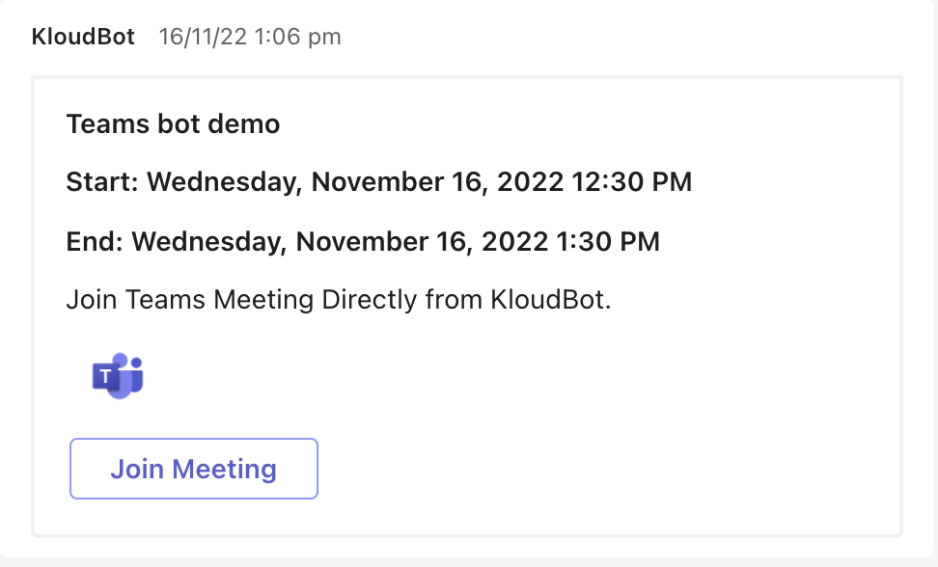KloudBot Configuration
Introduction
1. In this document we are going to discuss how to build a kloudBot application and how to upload it to the Teams application.
2. We are using Microsoft azure portal for this.
3. Log in to your Microsoft Azure portal using the URL given below
https://portal.azure.com/
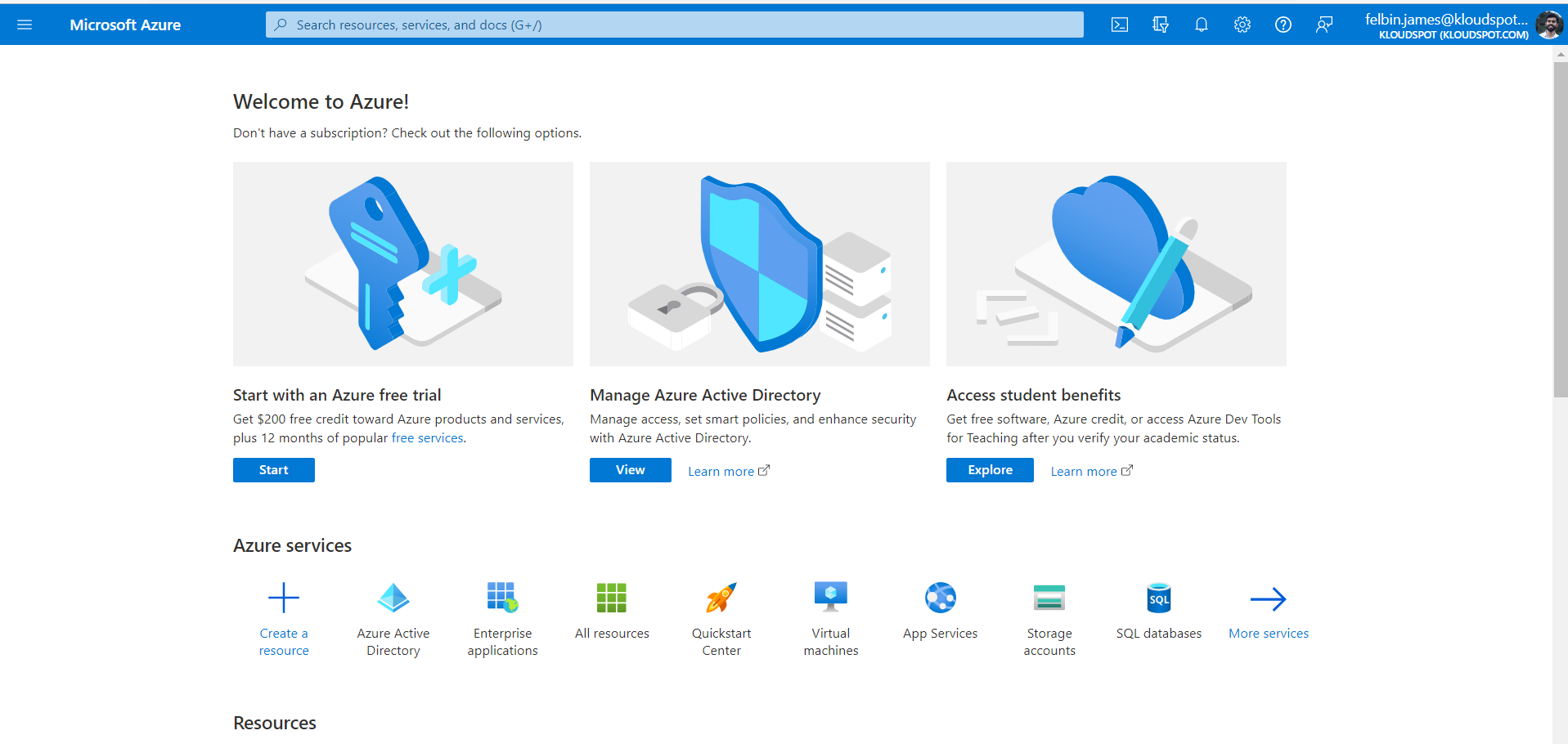

Create an Azure bot
1. Once logged in to Microsoft Azure. Search for Azure Bot in the search bar on the home page.
2. Select the Azure Bot option from the search result.
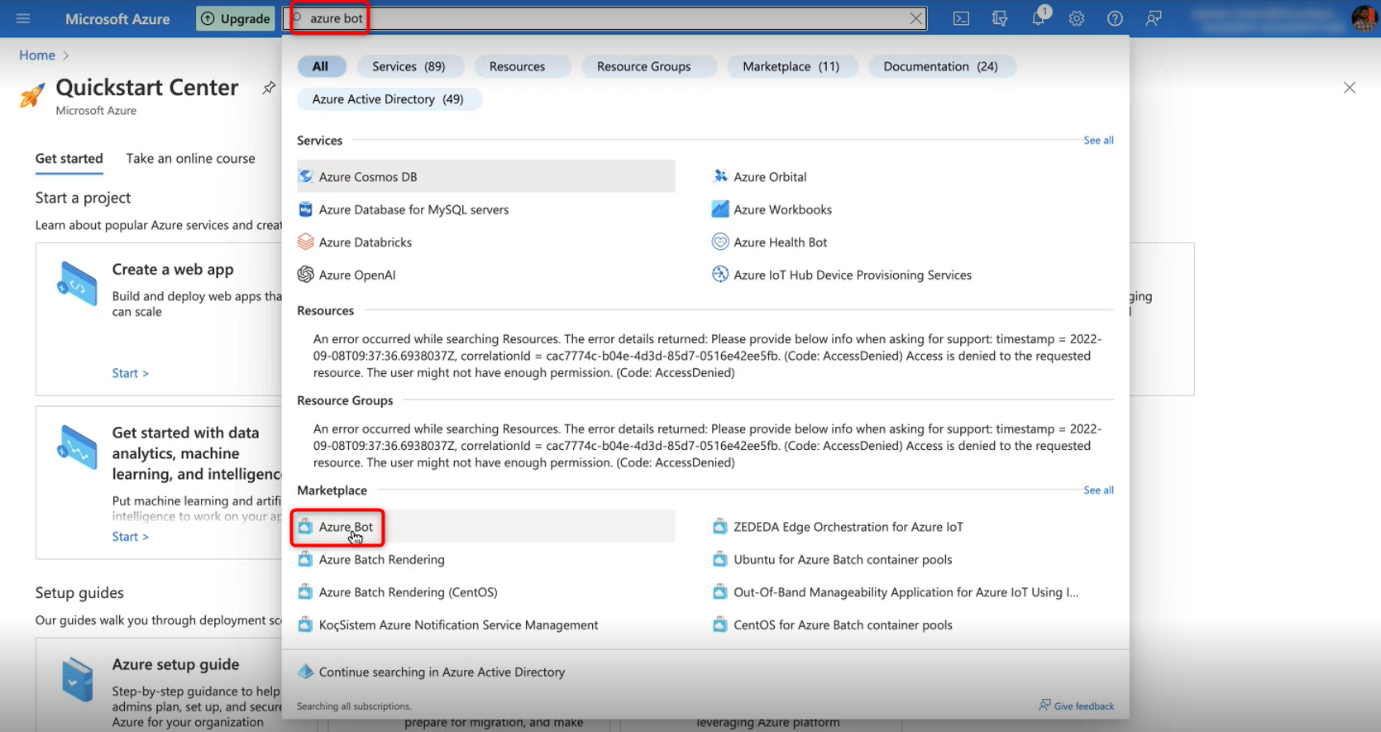

3. Then fill in the information in the window that opens as shown in the
picture and click the Review + create button.
4. You can select a resource group location according to your location.
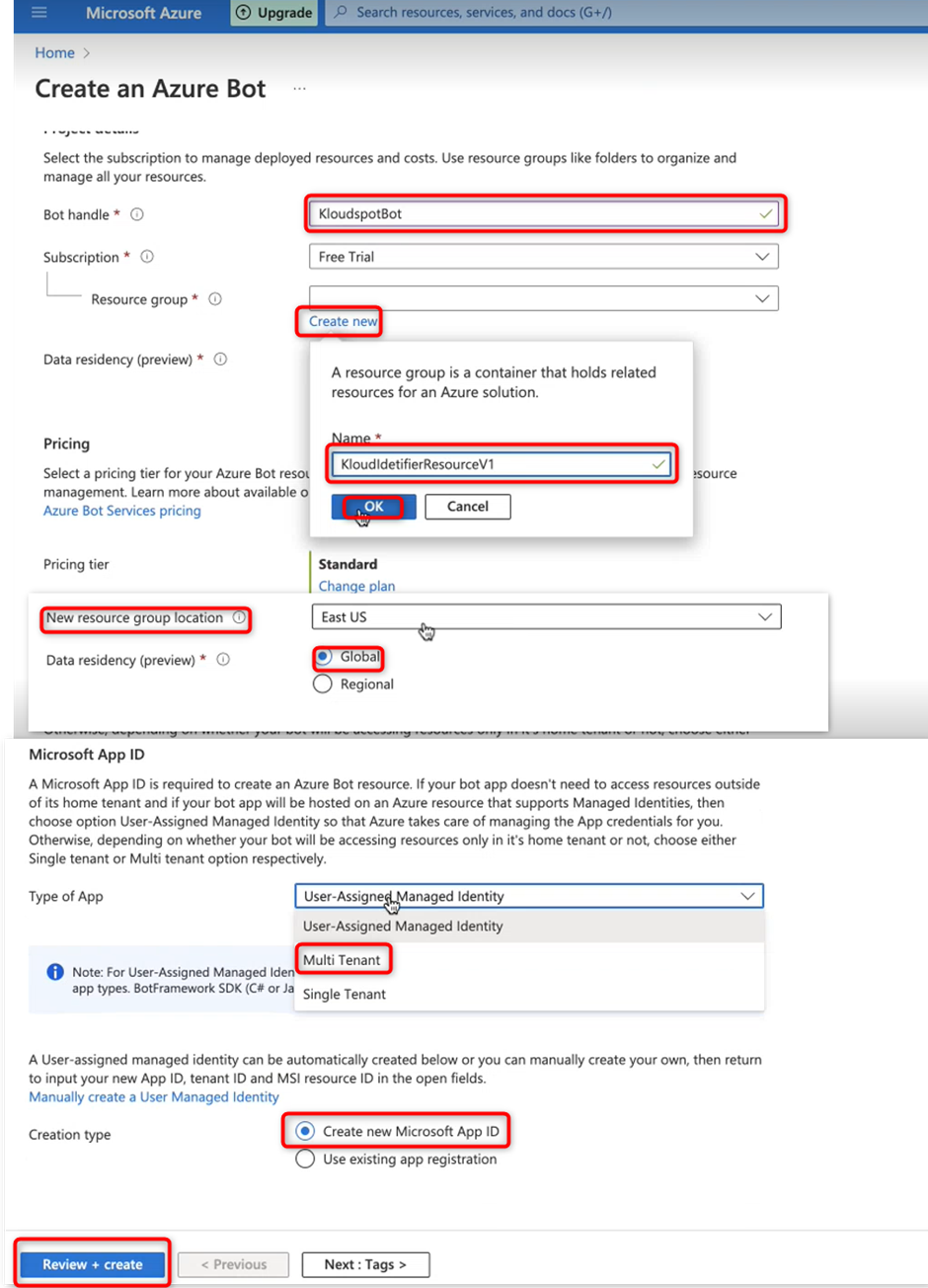

5. On the next page, make sure the information entered is correct and click
the Create button.
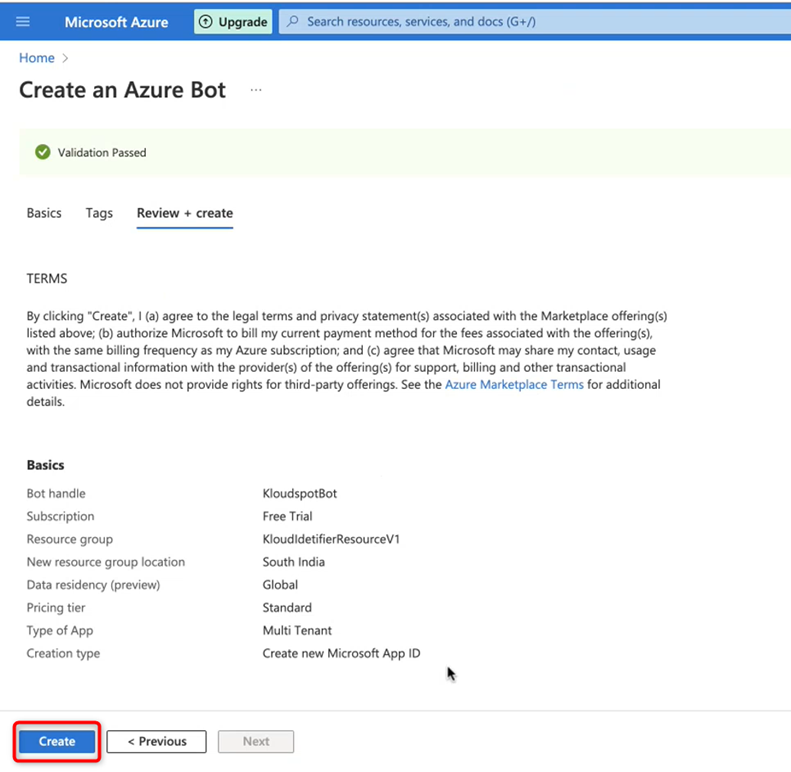

6. After a short loading, you will get the message your deployment is
complete.
7. Then click on Go to resource button to open the resource.
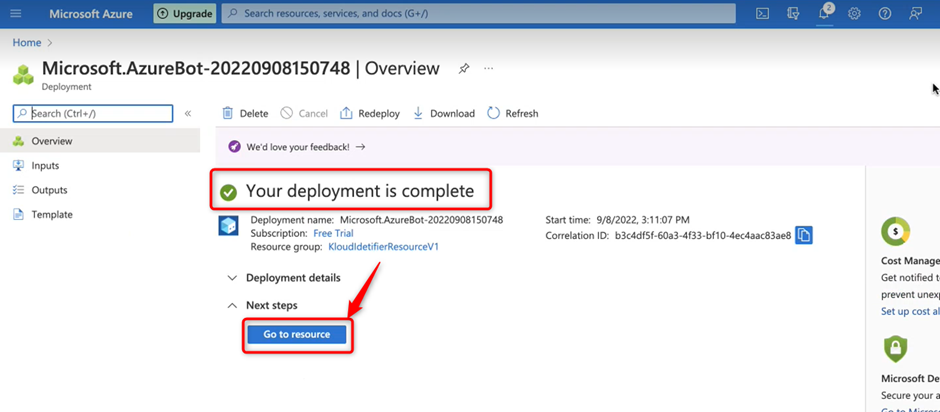

8. Then add an Icon in the Bot profile menu and click Apply button.
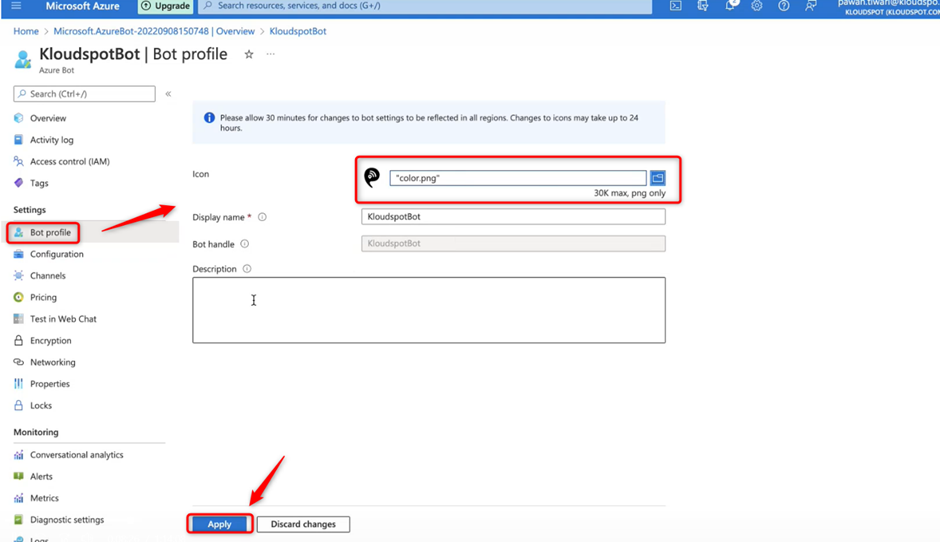

9. Then go to the Configuration menu and fill in all the information.
- Messaging endpoint: This is the URL from Kloud insights. Now leave it
blank. Check the Configure the KloudBot in KloudInsights. section to know more
about this.
10. Then click on the Manage button. It will guide you to the
certificates and secret page. Here you can create a new client secret.
11. The App ID will be generated automatically in the Microsoft App ID
column.
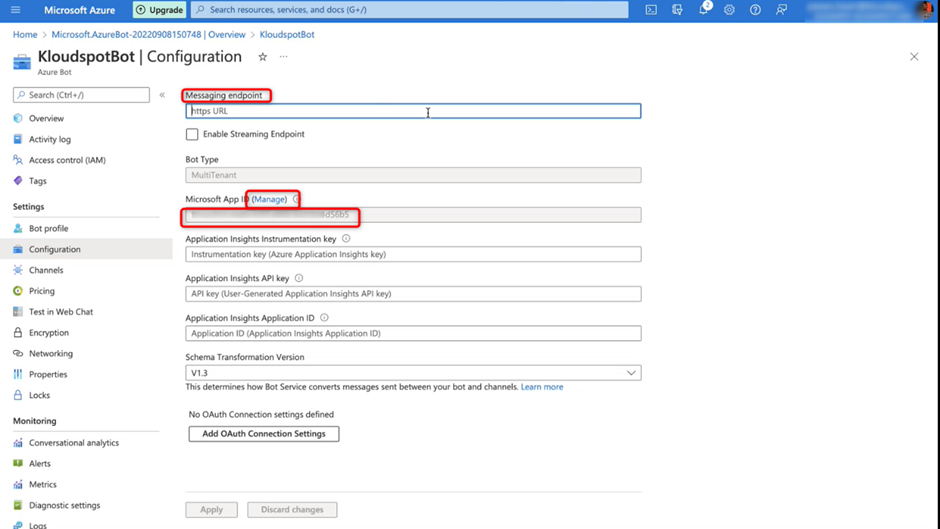

12. Create a new client secret by clicking on the +New Client secret
button.
13. Then enter a description and choose an expiry month. Then press
the Add button.
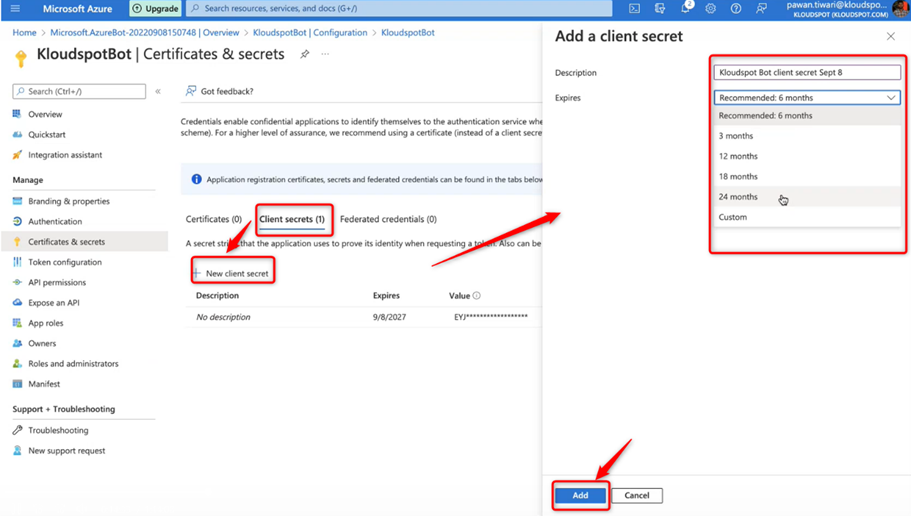

14. New client secret is created successfully.
15. Then copy the Value from the new client secret and paste it somewhere
else for later use.


16. Next click on the Add OAth Connection Settings.
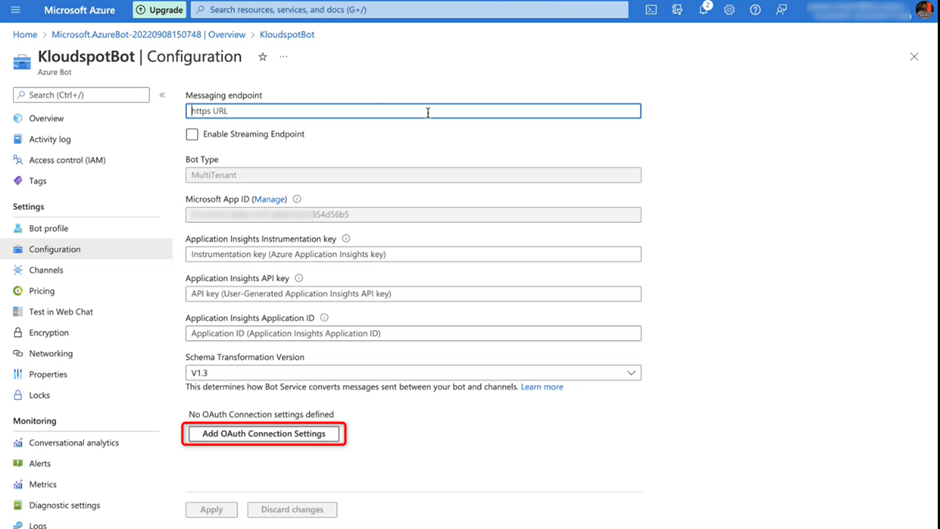

17. On the new connection settings page that opens, enter the Name and
select Azure Active Directory v2 as the service provider.
18. Copy and paste the Client ID and Client secret received while
registering the app here. Client ID and Client secret are obtained from the
App. Check the Register an App section to know how to get it.
19. Tenant Id will be common.
20. Copy and paste the following scopes in the scope column.
User.Read User.ReadBasic.All Calendars.Read Calendars.ReadWrite Mail.ReadBasic Mail.Read
21. Then click the Save button.
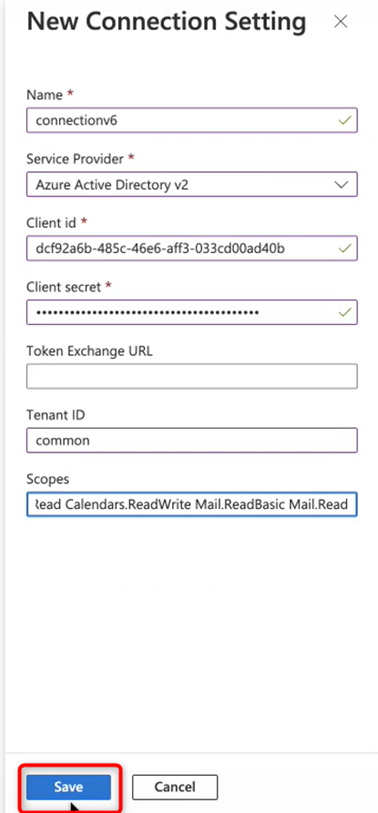

22. New Oath connection is added successfully.
23. Click the Apply button to save the changes.


Register an App
1. Search for App registration in the search bar on the home page.
2. Select the App registration option from the search result.
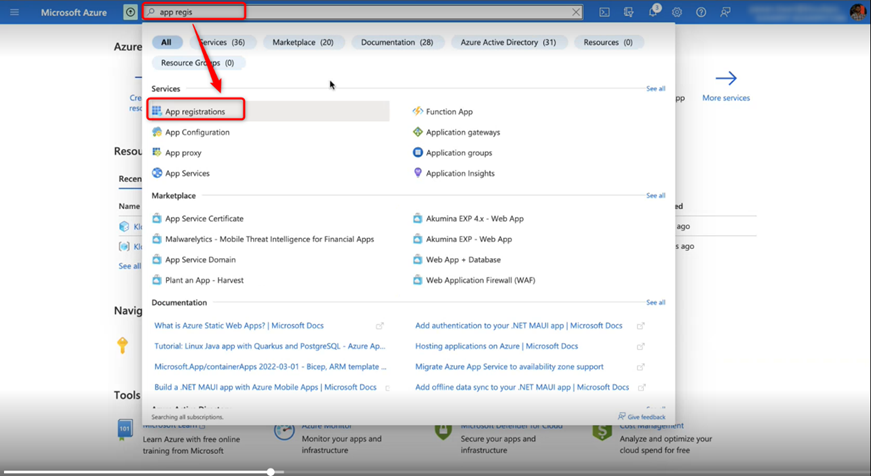

3. Click on the +New Registration button in the window that opens.
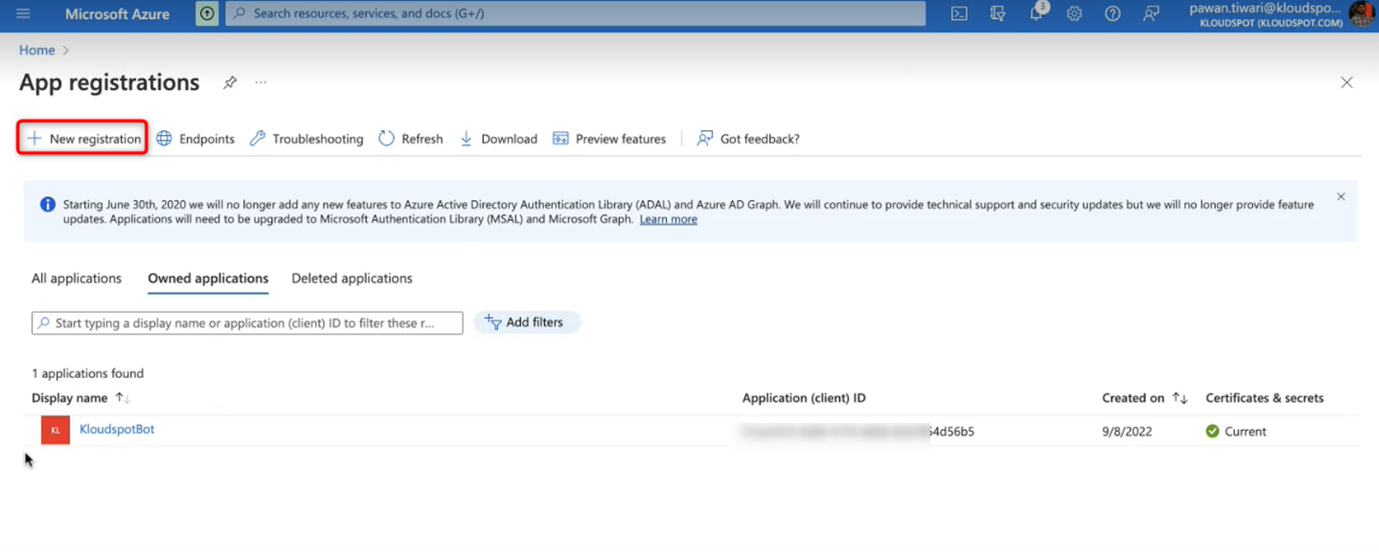

4. Then enter Name, Supported account type, Redirect URL and click the
Register button.
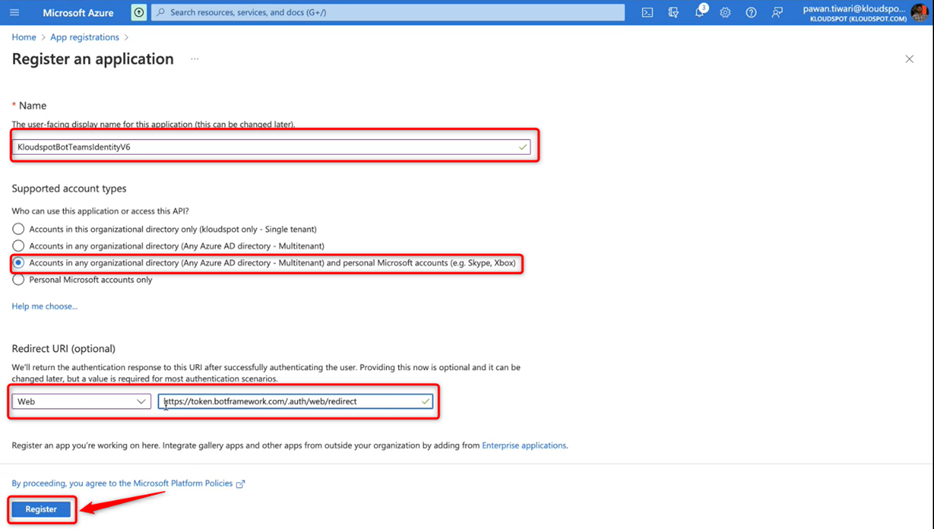

5. Application (Client) ID can be obtained from the window that opens
immediately after registration. Copy it and paste it somewhere for later use.
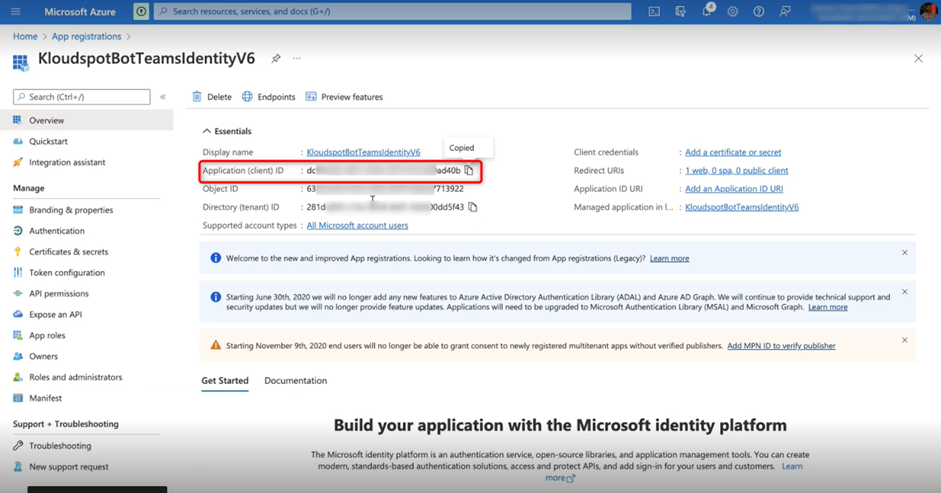

Create a new client secret
1. Next, we need the client secret, for that, navigate to Certificates and secrets > + New client secret.
2. Then enter a description and choose an expiry month. Then press
the Add button.
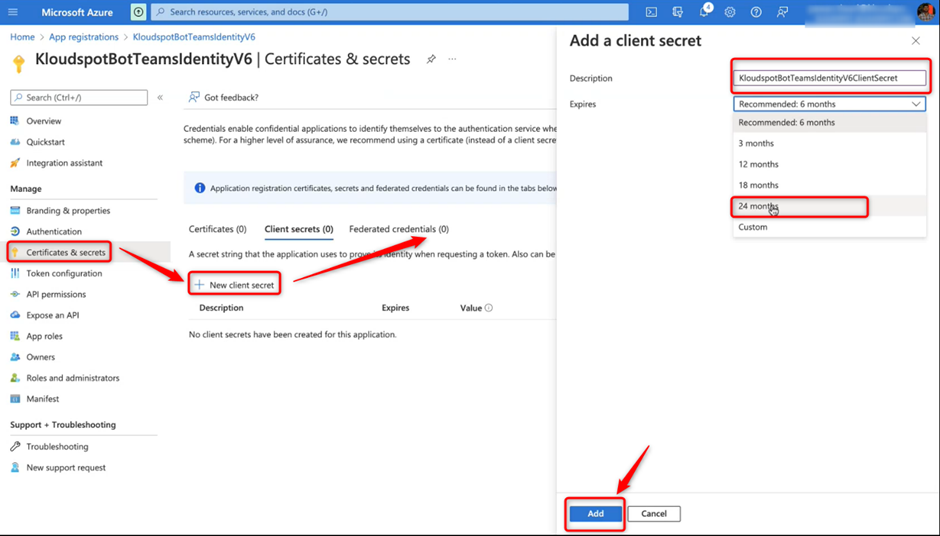

3. Then copy the Value from the window that opens and paste it somewhere
else for later use. This is the secret key.
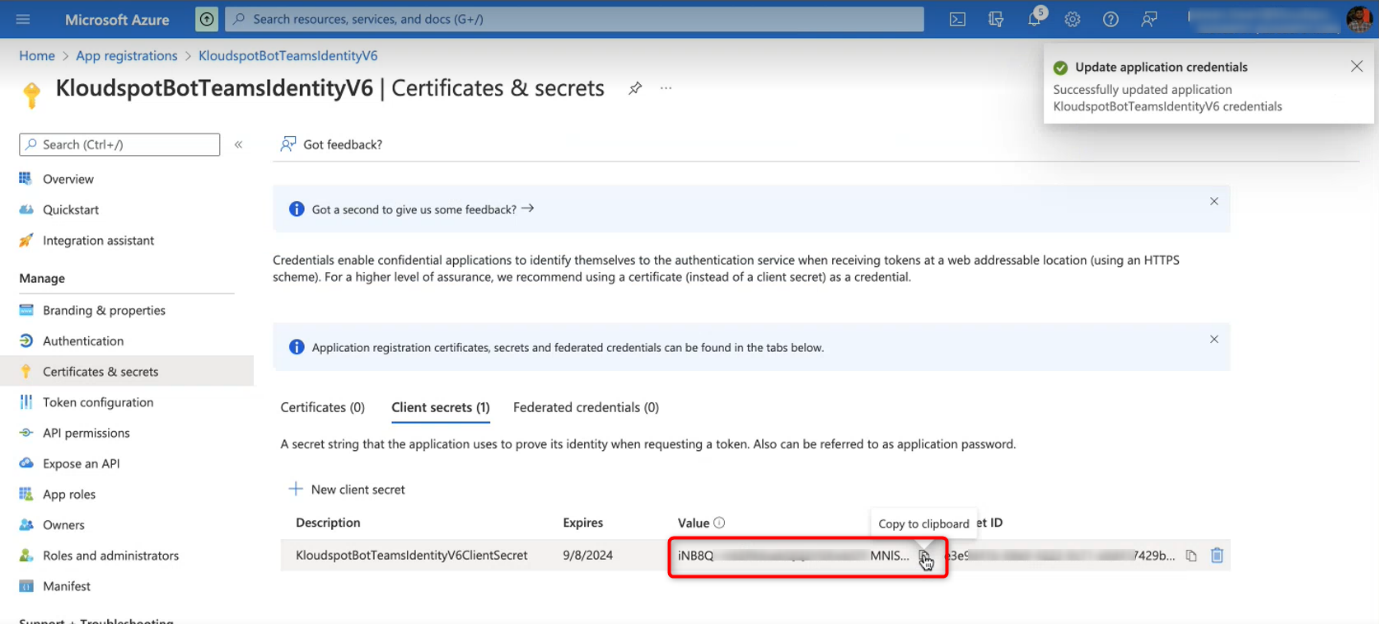

Add an API permission
1. Next, API permissions should be given to the application by navigating to API permissions > +Add a permission > Microsoft graph.
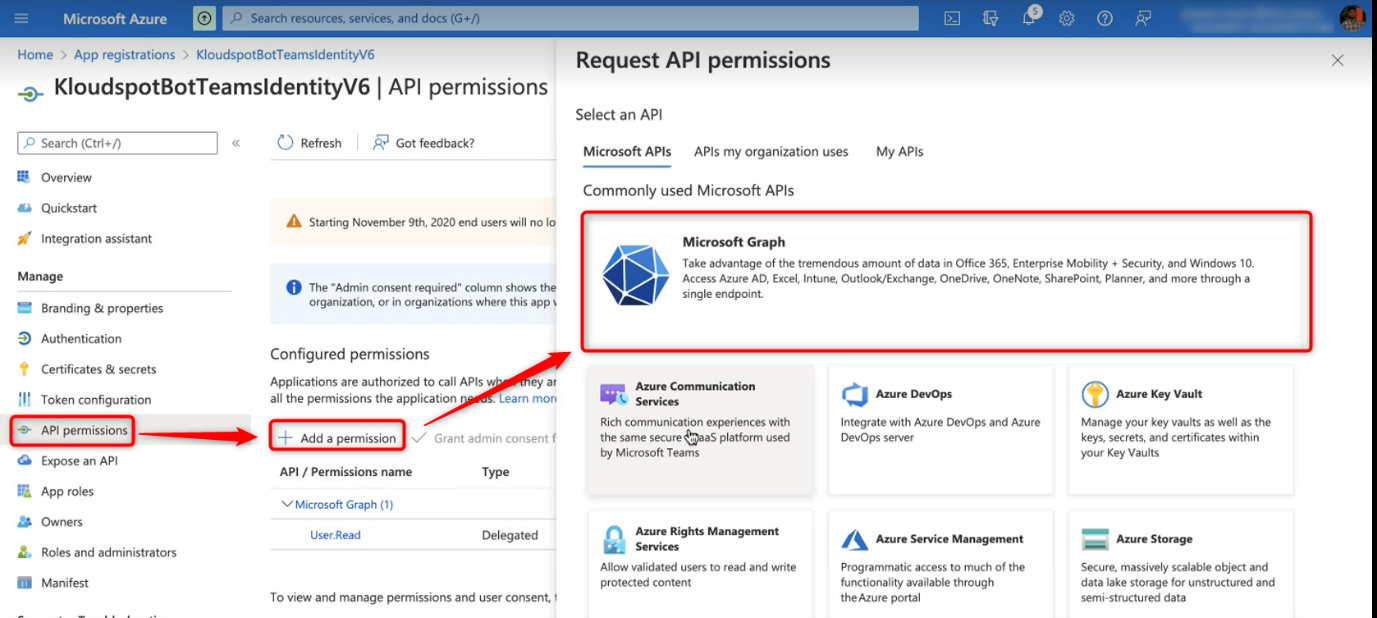

2. Under the Delegated permissions window, allow all the permissions in the
OpenId permissions, calendars, chat, and contacts sections as shown in the
figure.
3. Then click on the Add permissions button.
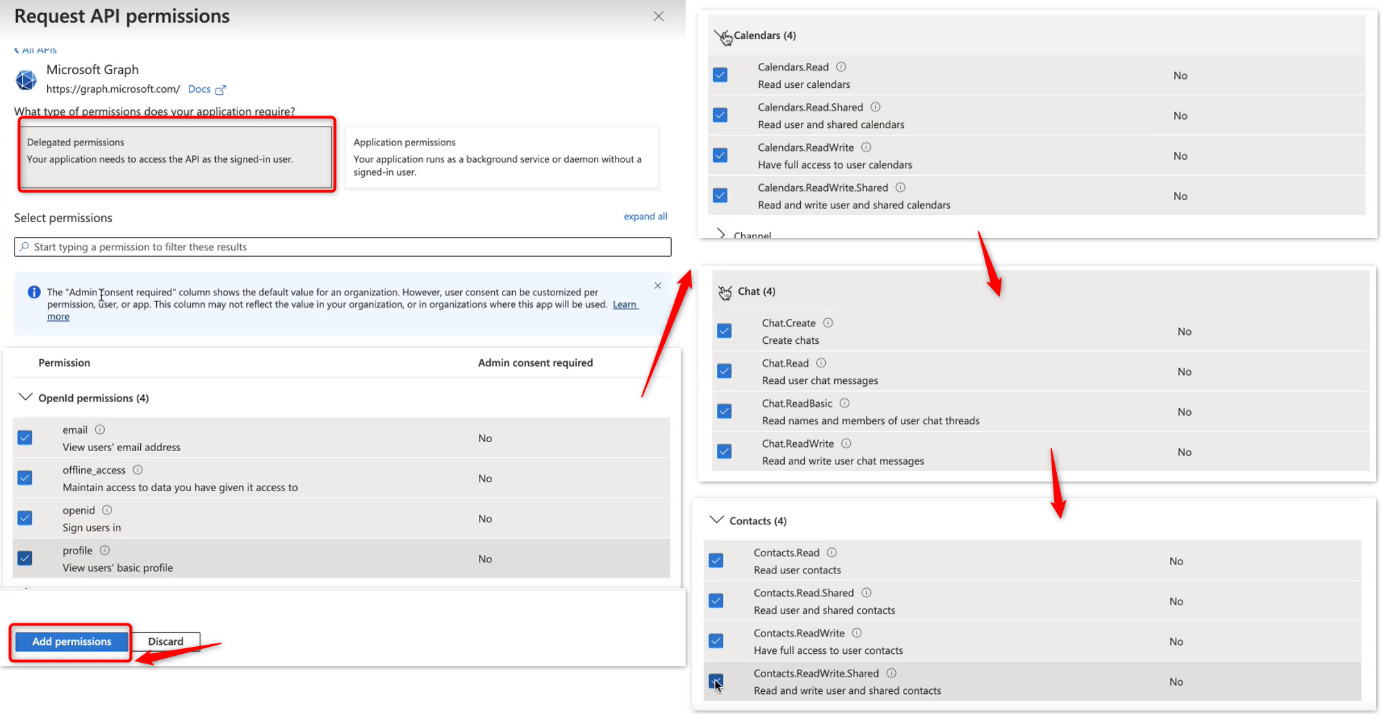

Set App Id URI
1. Click the Set button from the Expose an API window to generate the App ID URI.
2. Click the Save button to save the Application ID URI.
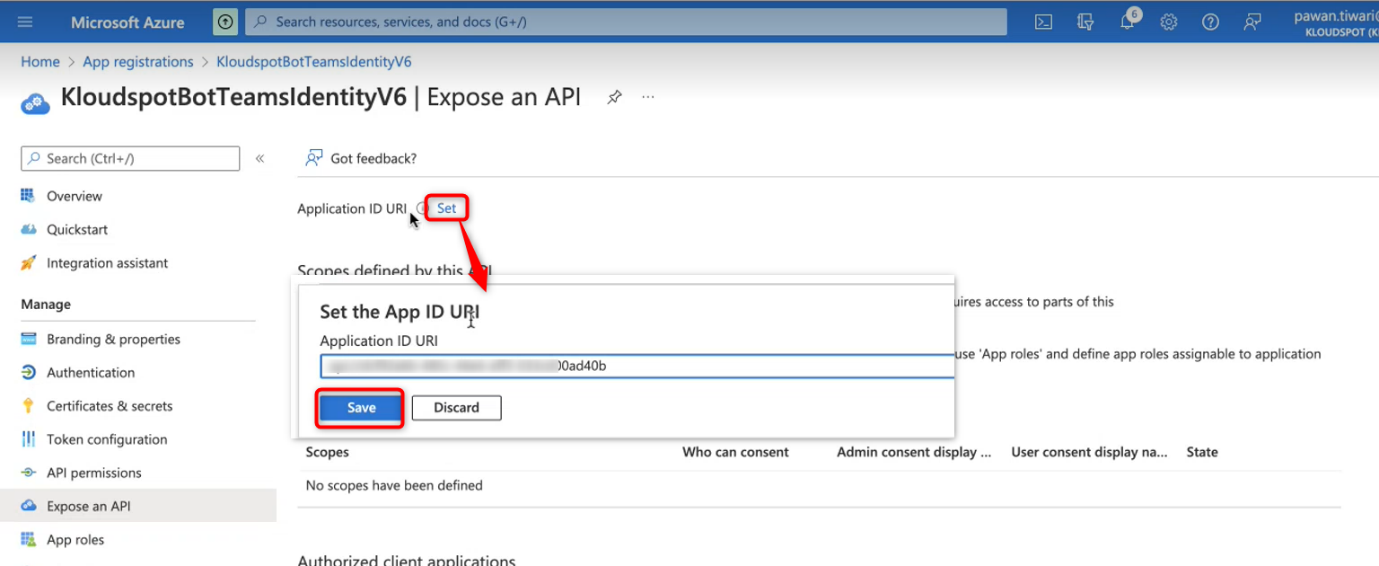

Add a scope
1. Navigate to Expose an API > +Add Scope to add a new Scope. Then fill the Add a scope window as shown in the figure. Then click the add scope button to save the scope.
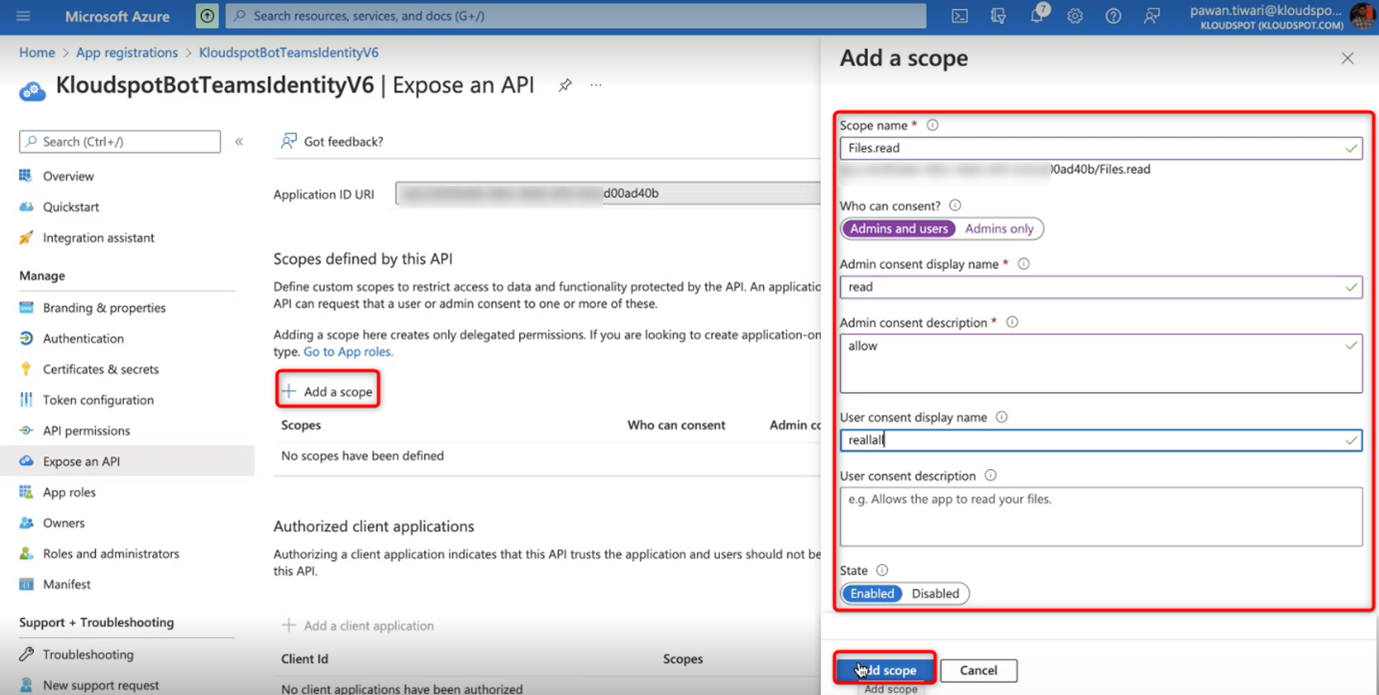

1. log in to KloudInsights and Navigate to settings >API Keys.
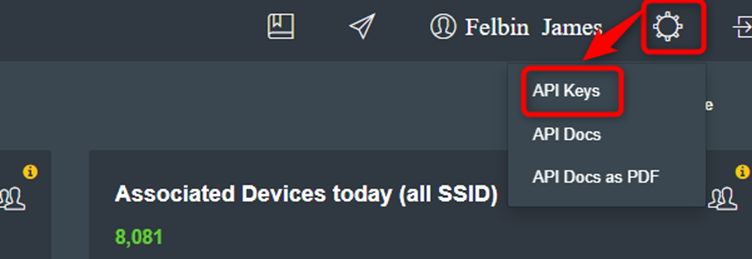

2. In the API Keys window that opens, click on the +New API Key button.
3. In the popup window, select Administrator from the Role list and click
the Add Key button.


4. New ID and Secret key are created. Then copy the ID and Secret
key from the API Keys and paste it somewhere else for later use.


5. Then navigate to Configuration > Integrations > Applications.
6. Scroll down and find the Teams App Settings.
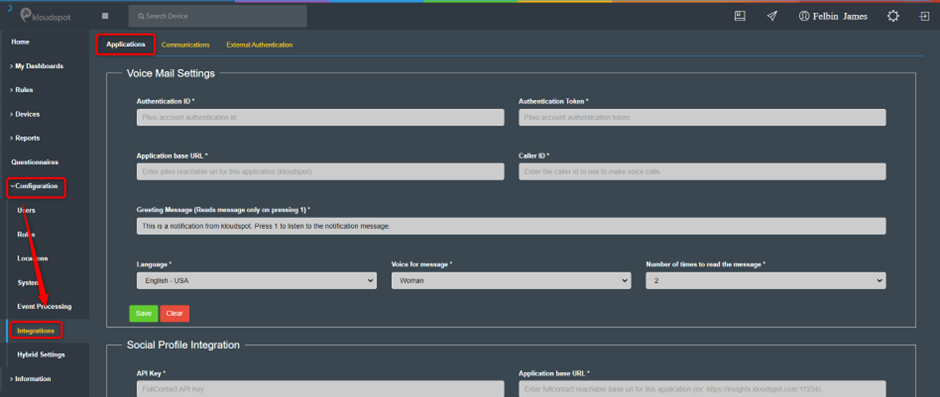

7. Enter the Name, Language, and connection name and select the
capabilities.


8. You can select capabilities based on requirements.
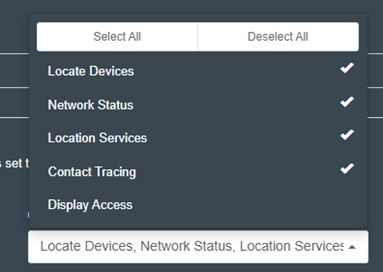

9. Enter the Microsoft App ID and secret ID obtained when the Azure bot
was created in the Bot Id and Bot password columns. Refer Create an Azure
bot section for more details
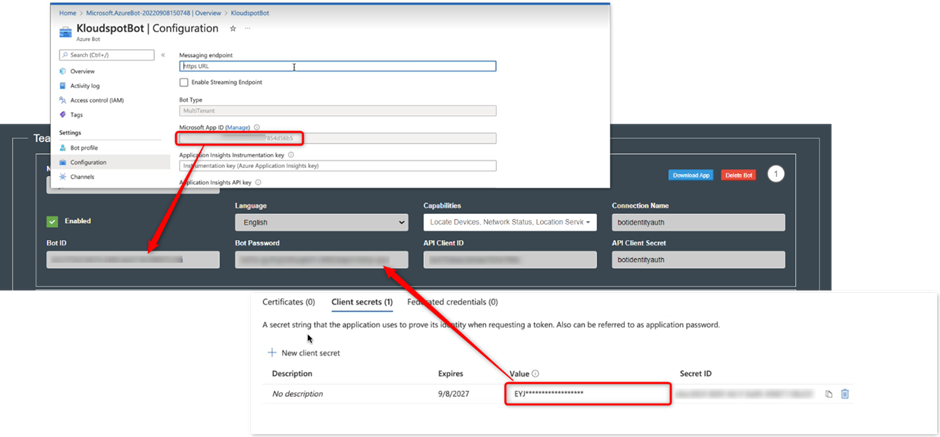

10. Enter the ID and secret Key obtained from the API Keys in the API
Client ID and API client Secret columns.


11. Finally click on the Save button to save changes.
12. Immediately you will get the messaging endpoint URL.


13. Return to the Azure portal and paste the messaging endpoint URL into the
Messaging endpoint column.
14. Click the Apply button to save the changes.
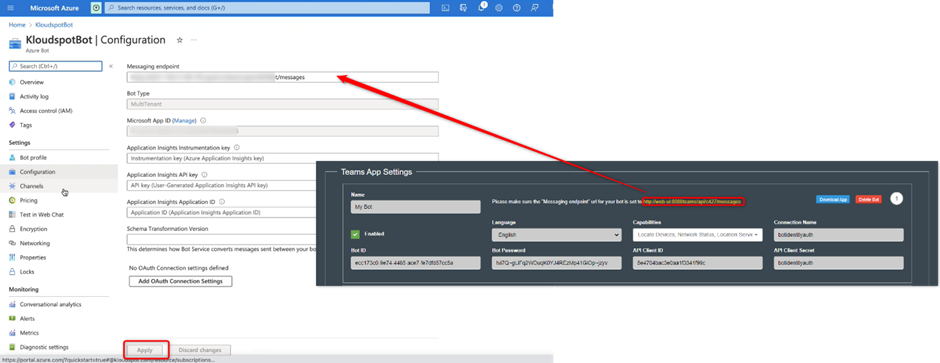

15. Then go to the Test In Web Chat menu and check that the app is
working properly.
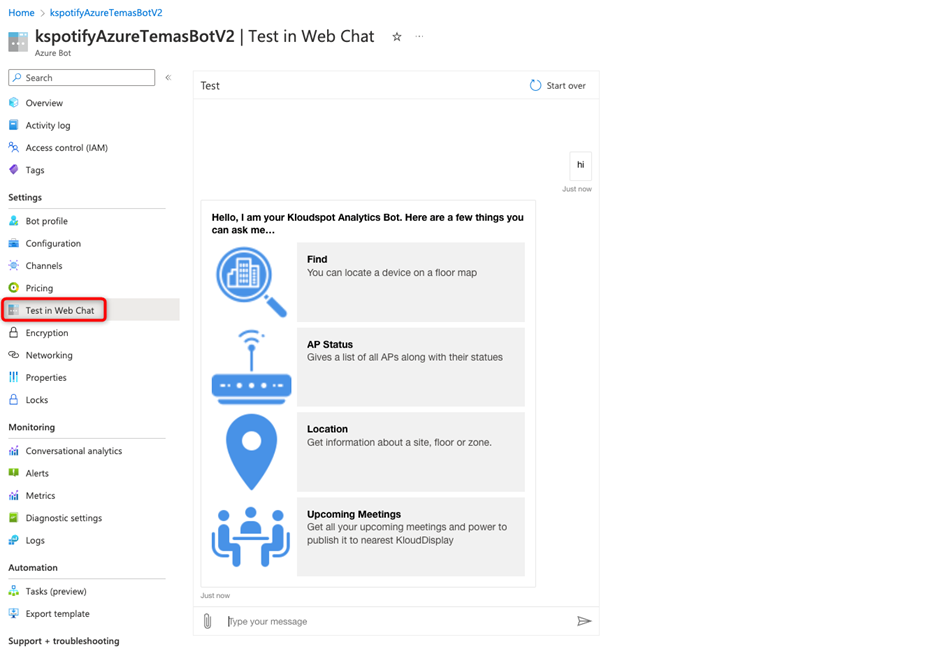

16. If the app is working properly, the next step is to integrate it into the
teams app.
17. To do so, navigate to Channels menu and Select the Web Chat
option from the channel list that opens.
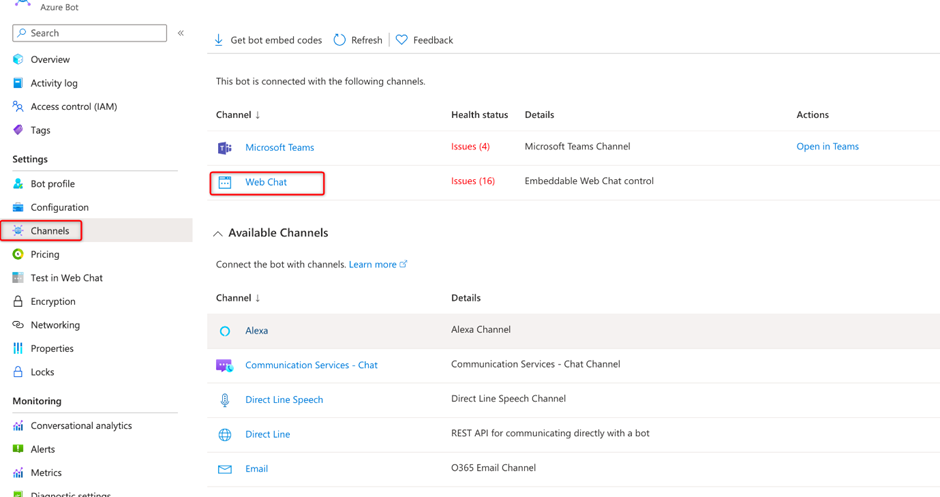

18. Select the Default Site option. Then, in the new window, check the
Enable Preview and Block attachment upload from user checkboxes then
click the Apply button.
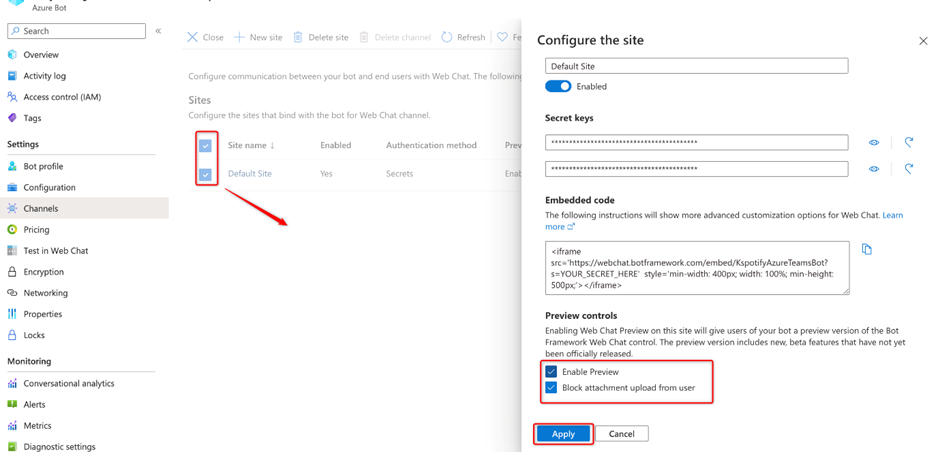

19. Return to the Channel menu and click on the Microsoft Teams
channel.
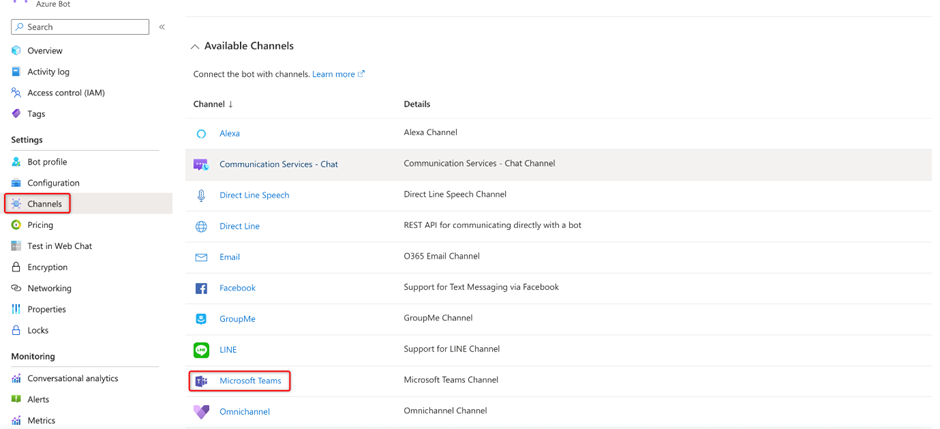

20. Immediately the terms of service popup window will open, check the
checkbox, and click the Agree button.
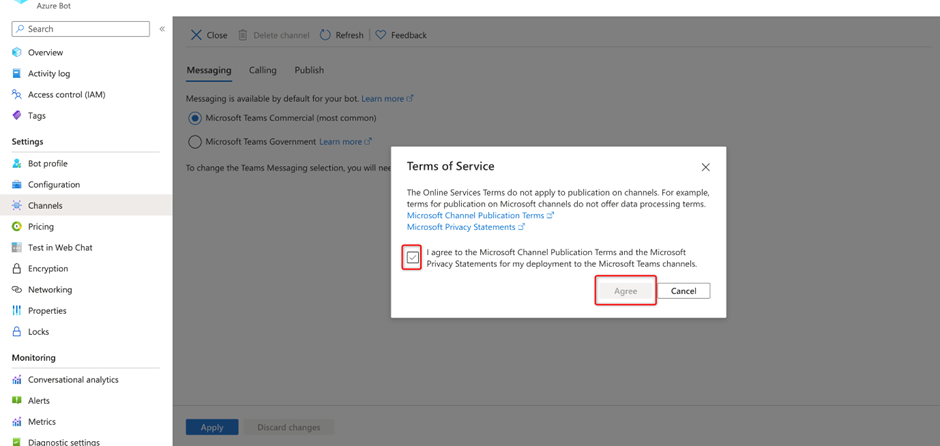

21. In the window that opens, on the Messaging tab, check the Microsoft
Teams commercial(most common) check box and click the Apply button.
22. Your application is successfully integrated into Teams App.
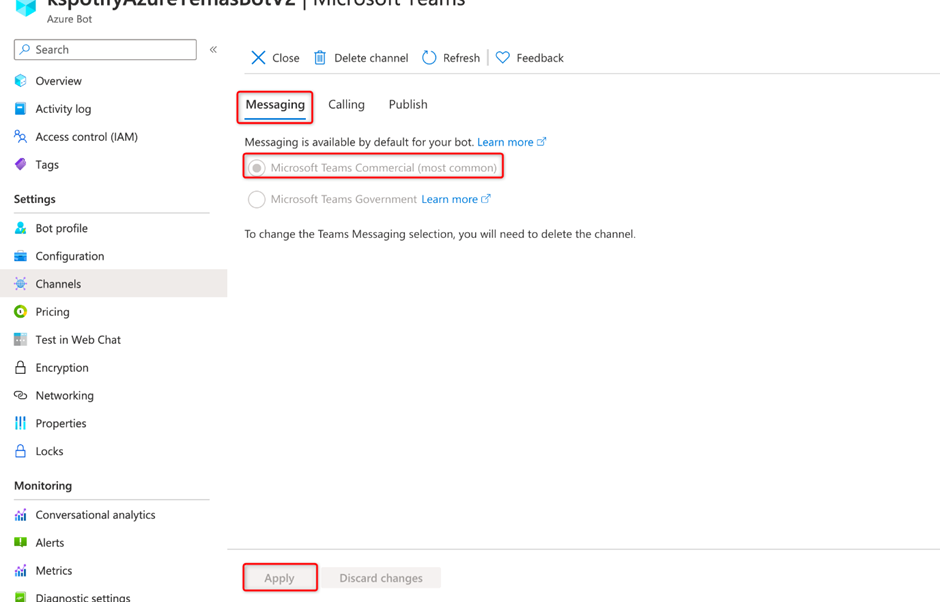

Add KloudBot to Teams App
1. First, download the app from KloudInsights. For that. Login to the KloudInsights.
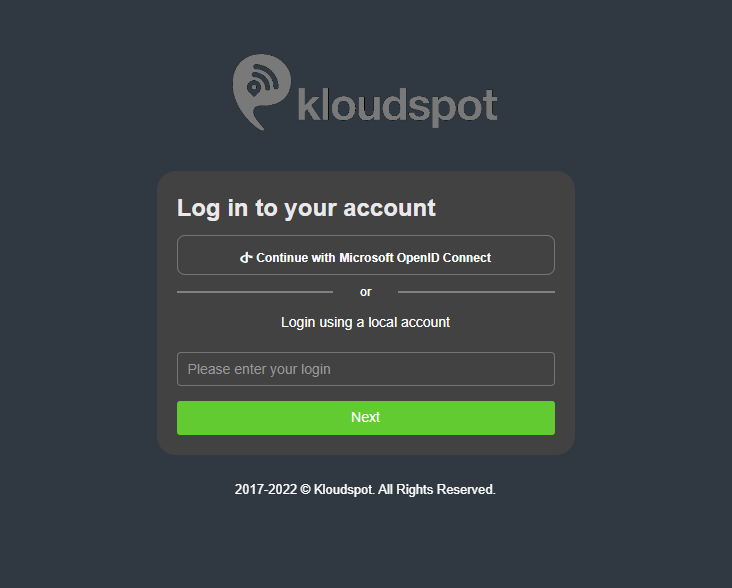

2. Then navigate to Configuration > Integrations > Applications.
3. Scroll down and find the Teams App Settings.
4. Download the App by clicking the Download App button.
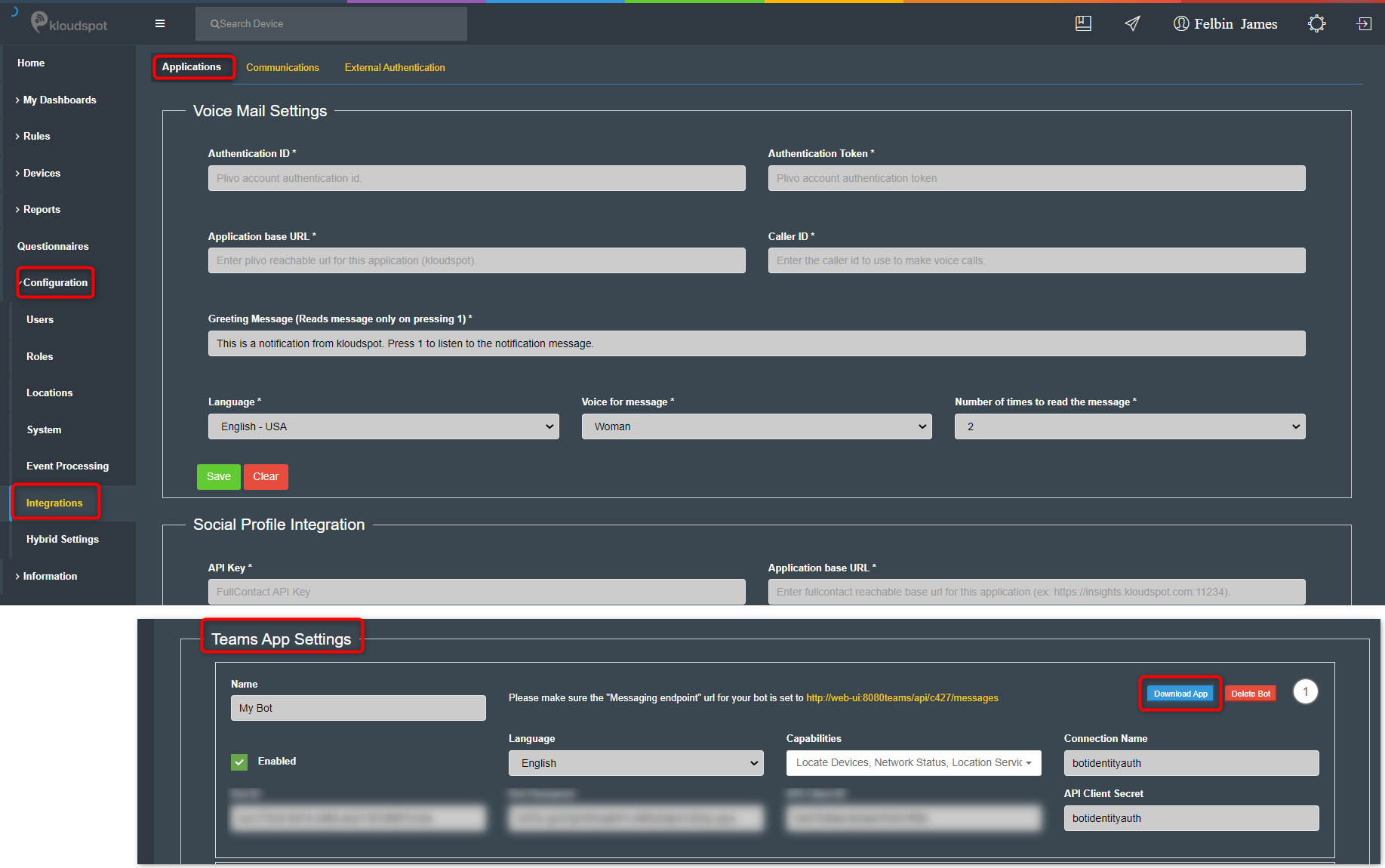

5. Then open teams App and navigate to Apps > Manage your apps > Upload an
app.
6. Select Upload a custom app option and then upload the App downloaded
from Insights.
7. Your app has been successfully added to Teams
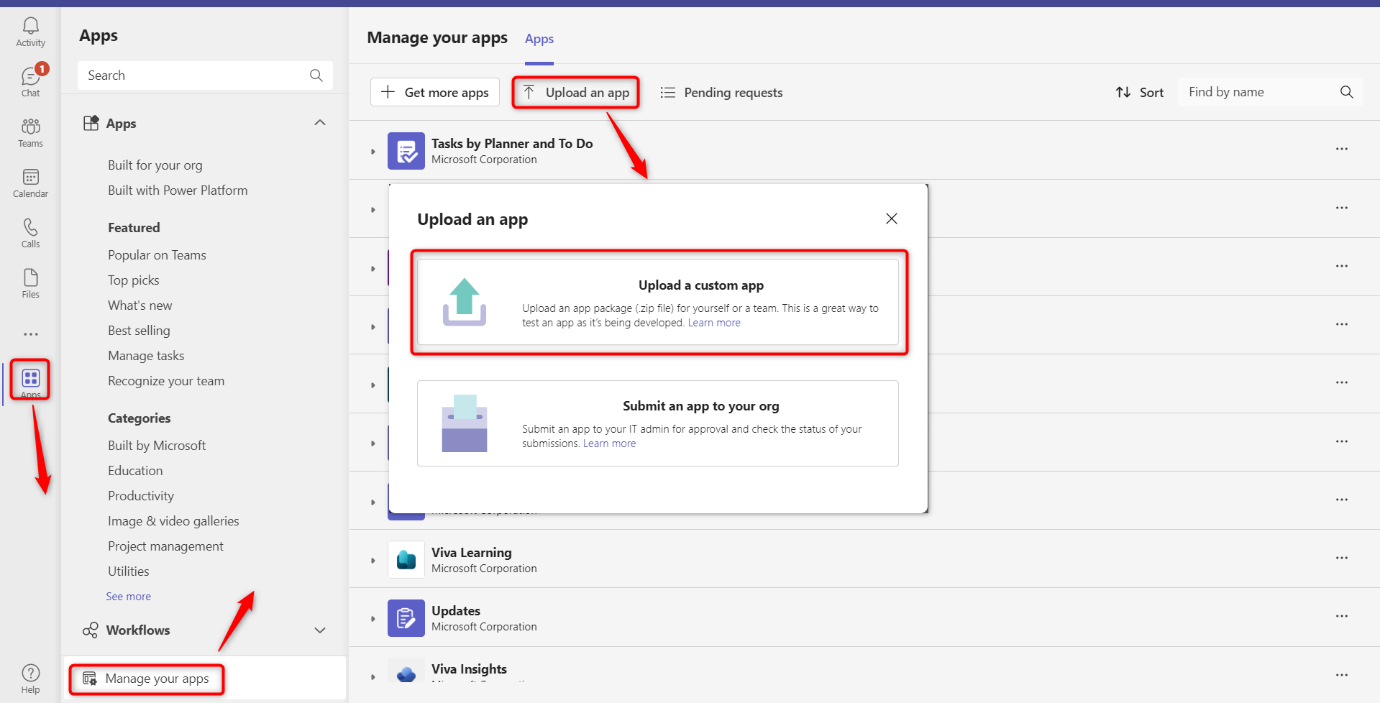

KloudBot User Guide
Introduction
With Kloudspot, you can now easily access real-time information about device
locations, points of interest, footfall summaries, and dwell time summaries
through your Microsoft Teams app, whether you are using it on your mobile
device or on the web. This integration allows you to interact with Kloudspot’s
advanced analytics and insights directly from your Teams platform, enabling
you to make informed decisions quickly and efficiently. Whether you’re
managing a team, overseeing a project, or simply need to stay up-to-date with
your organization’s operations, this integration offers a seamless way to
access valuable data and insights.
Find My Kloudspot
1. Open the Teams app.
2. Click the more button from the menu bar.
3. The Popup window will open with the search bar.
4. Search for My Kloudspot and click on It.
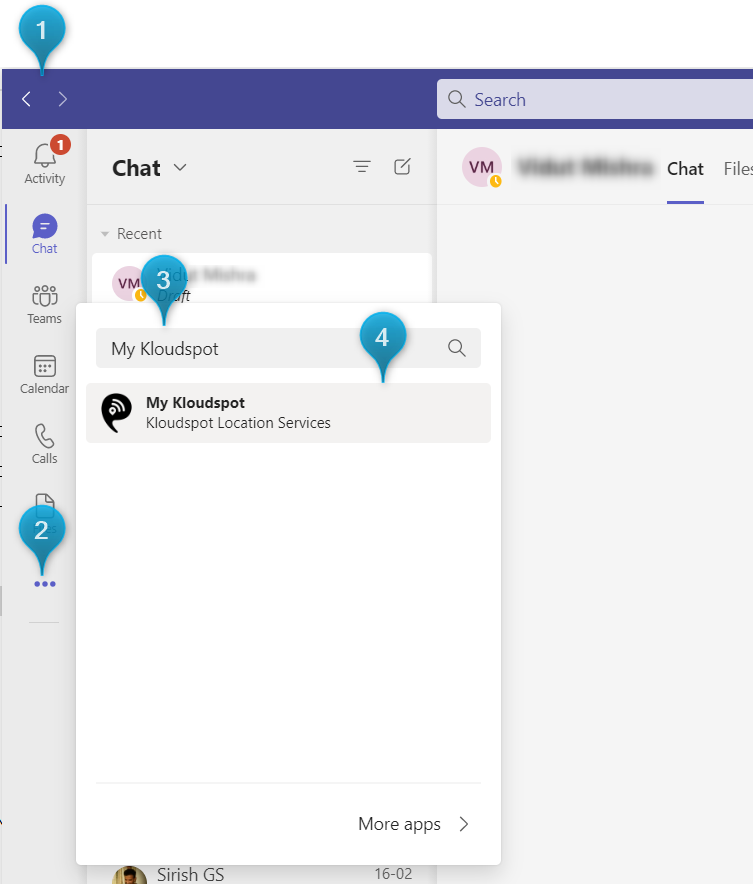

5. My Kloudspot window will open.
6. Click Add button to add the My Kloudspot.
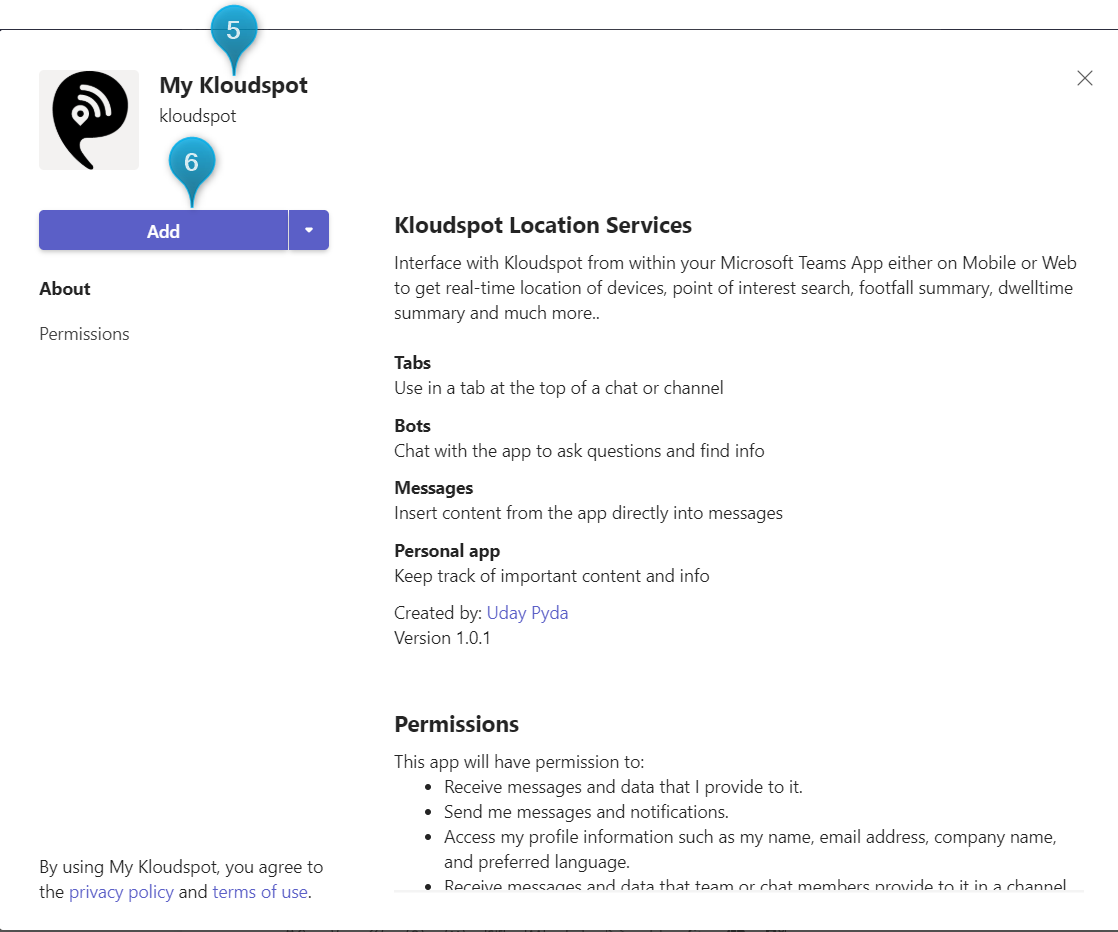

7. My Kloudspot Analytics Bot is successfully added to the Teams app.
Getting started
1. As soon as you add KloudBot, a window will open with the key information.
2. You can click on each button to learn about what are the keywords under the function.
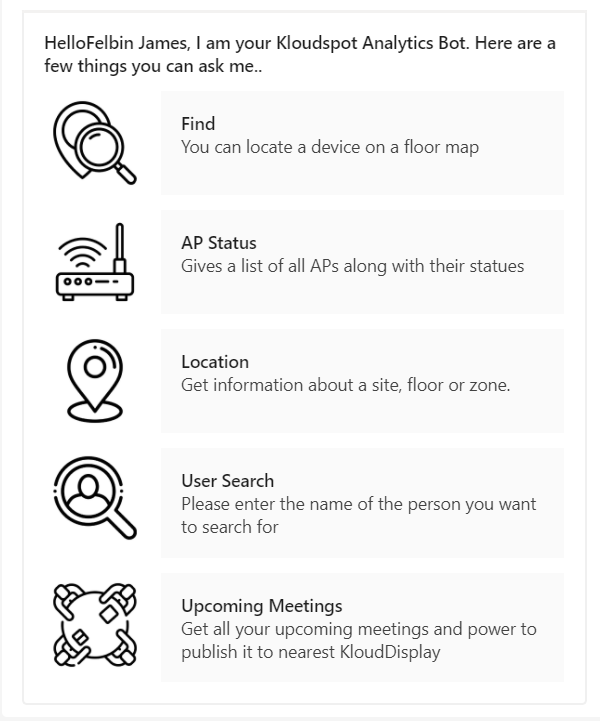

Find
1. Click on the Find Button.
2. A popup button will open with more information. The find command is used to find someone with the help of the Device he uses.
| Commands |
Use |
| Find < Name> |
You can locate a device on a map for example: find john : Gives the last known location of the devices that match the keyword ‘john’ |
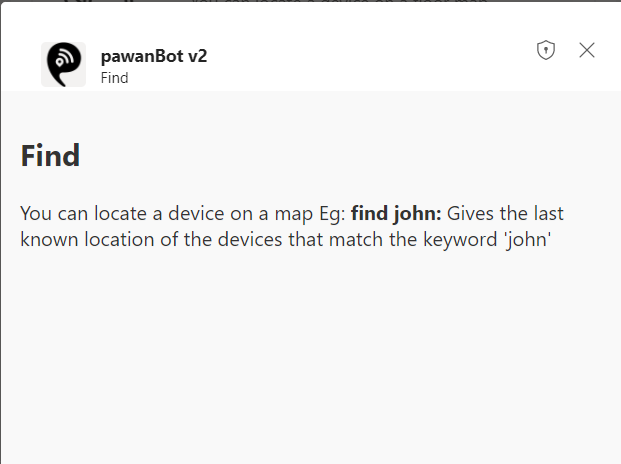

AP Status
1. Click AP Status.
2. A popup button will open with more information. This gives you a list of currently available APs and their status.
| Commands |
Use |
| apstatus |
Gives a list of all APs along with their statuses |
| apstatus up |
Gives a list of all APs that are currently up |
| apstatus down |
Gives a list of all APs that are currently down |
| apstatus |
Gives the status of a particular AP |
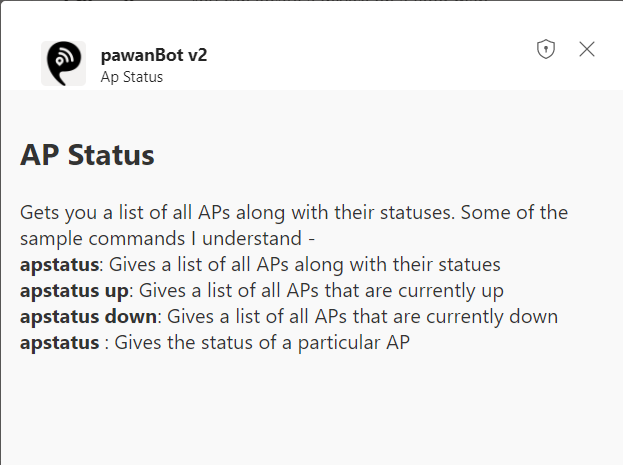

Location
1. Click on Location.
2. This gives you information about Location List, Footfall, Dwell time, heatmap, user chat, footfall calendar, path distribution, outbound traffic, inbound traffic, dwell time chart, repeat user chart, camera demographics chart, camera occupancy chart, live feed, and the rest.
| Commands |
Use |
| location |
Gives a list of all locations in the system |
| location list |
Gives a list of all locations in the system |
| location show |
Gives a list of all locations in the system |
| location print |
Gives a list of all locations in the system |
| location 1 |
Gets information about the 1st location in the list |
| location 1 footfall |
Get the last 5 mins footfall information for the 1st location in the list |
| location 3 dwelltime |
Get today’s average dwell time for the 3rd location in the list |
| location 3 heatmap |
Get the heatmap for the given location (typically used for floors) |
| location 3 userchart |
Displays a chart that shows the guest and connected device counts at the location |
| location 3 footfallcalendar |
Displays a calendar view of the device counts by day |
| location 3 pathdistribution |
Displays the traffic flow from each zone to all the other zones at a given location |
| location 3 outboundtraffic |
Displays the outbound traffic flow at a given location |
| location 3 inboundtraffic |
Displays the inbound traffic flow at a given location |
| location 3 dwelltimechart |
Displays a chart that shows the average dwell times of all the zones within the selected location |
| location 3 repeatuserchart |
Displays a chart displaying the count of repeat users on a per-zone basis at any location |
| location 3 camerademographicschart |
Displays a chart of demographics captured by KloudVision Cameras |
| location 3 cameraoccupancychart |
Displays camera-based occupancy metrics at a given location |
| location 3 livefeed |
Shows a real-time snapshot of the feed from the camera at the given location |
Find a device
1. In the chat box, type the keyword of the device you want to find along with the find command. Waite for some seconds.
For example: Find Ravi
2. The last active location of the device with the keyword we entered will be
displayed in the chat as a map.
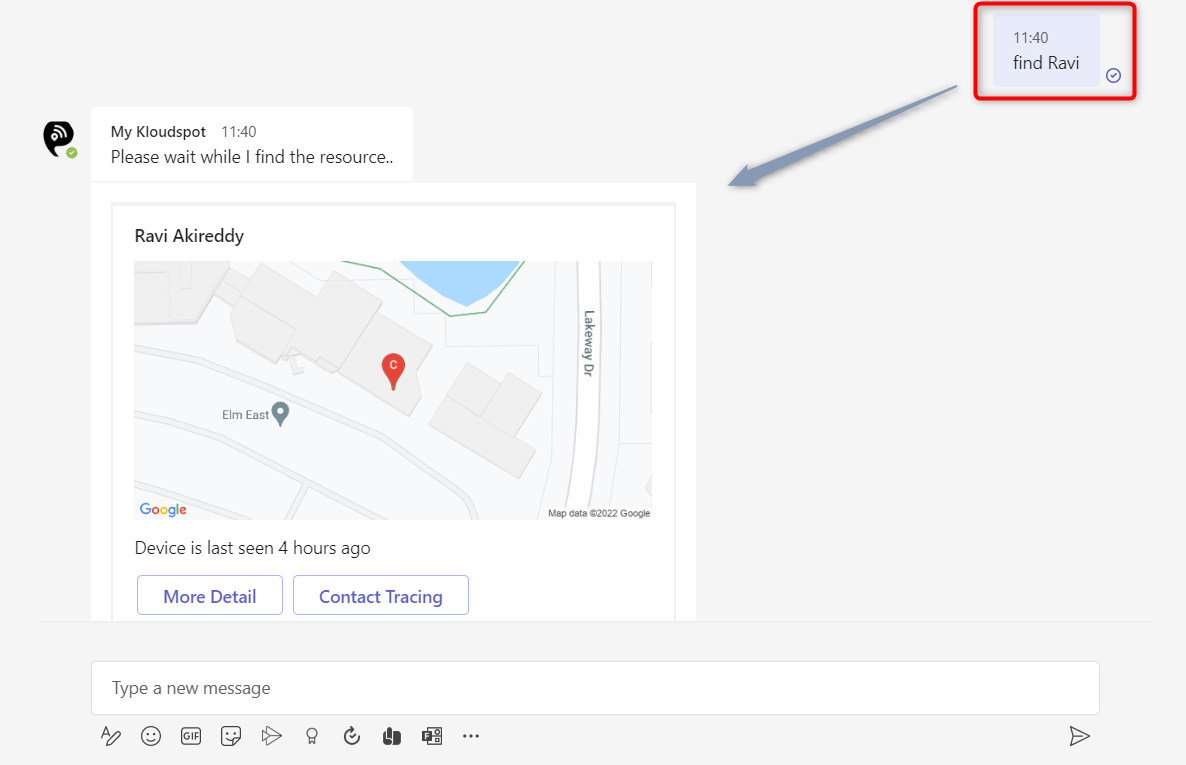

3. Click on the More Details button to get more details about the
location.
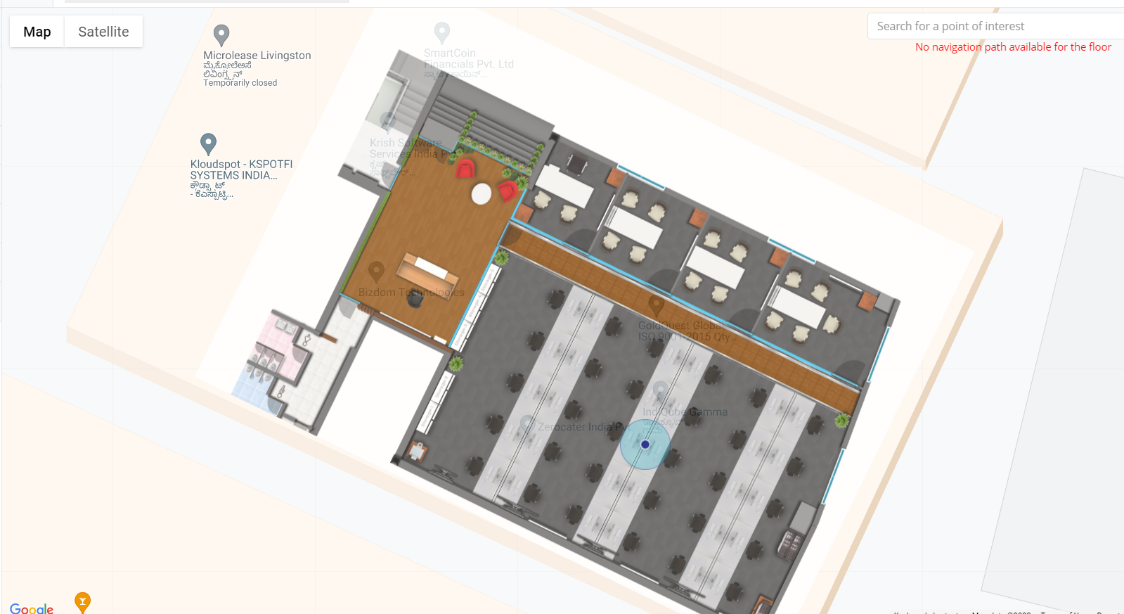

4. To find out who is likely to come into contact with that person, click the
Contact Tracing button.
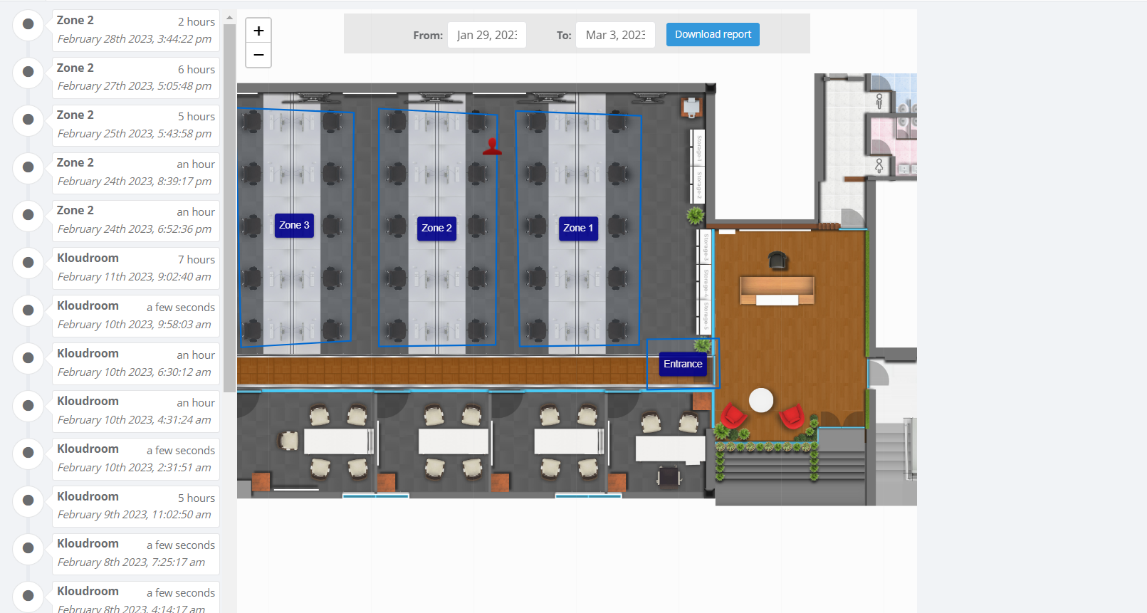

Get AP Status
Find AP list with the status
1. To get the full list and status of available APs, enter the command apstatus in the chat box and hit the enter key.
2. A list of current APs will be sent in reply.
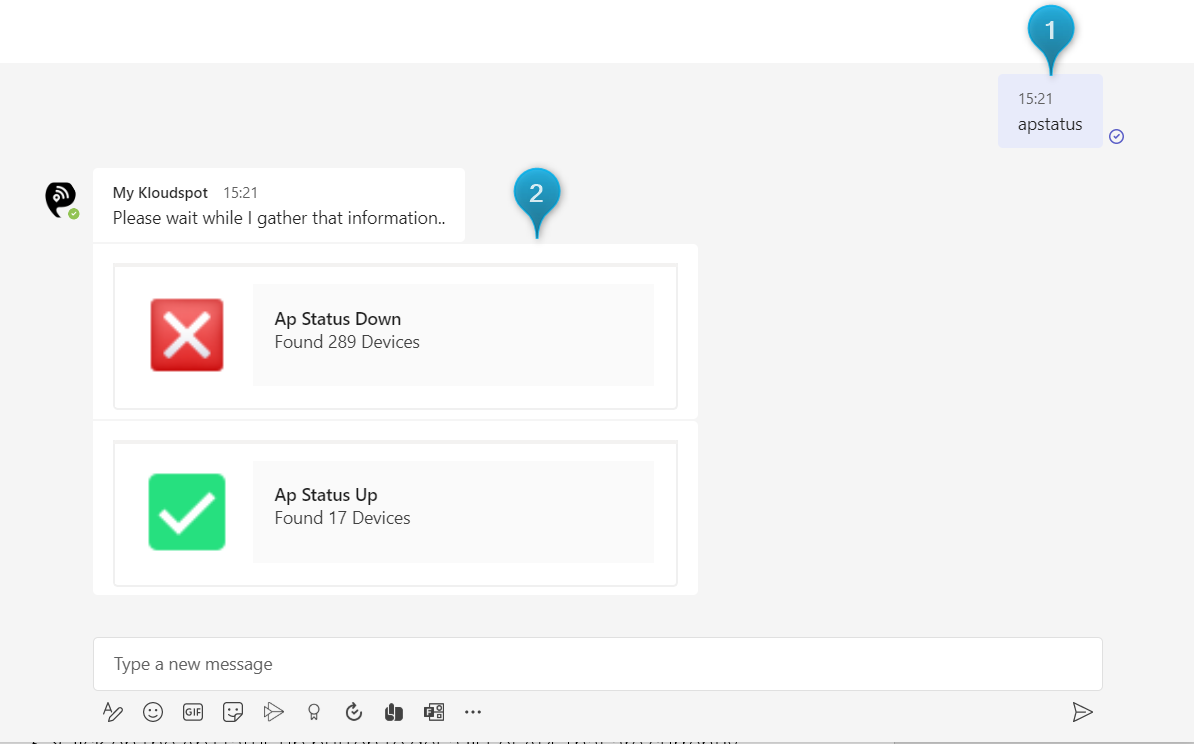

3. Click on the Ap status up button to get a list of APs that are
currently Up.
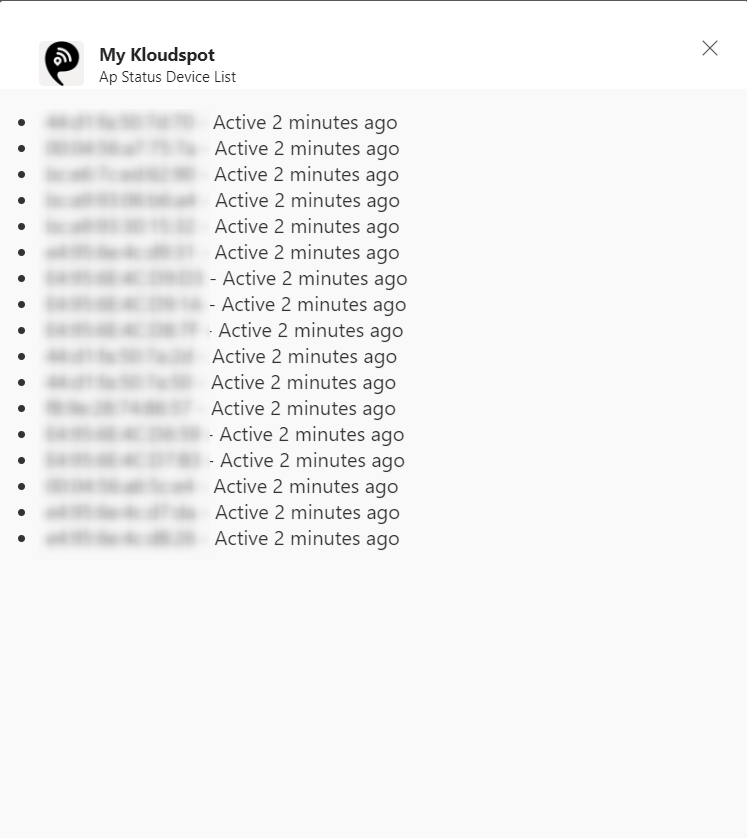

4. Click on the Ap status Down button to get a list of APs that are currently
down.
Find AP list with the UP status.
1. To get information about the APs currently in UP status, type the command apstatus up in the Chat box and hit enter key.
2. A list of APs in up status will be sent in reply.
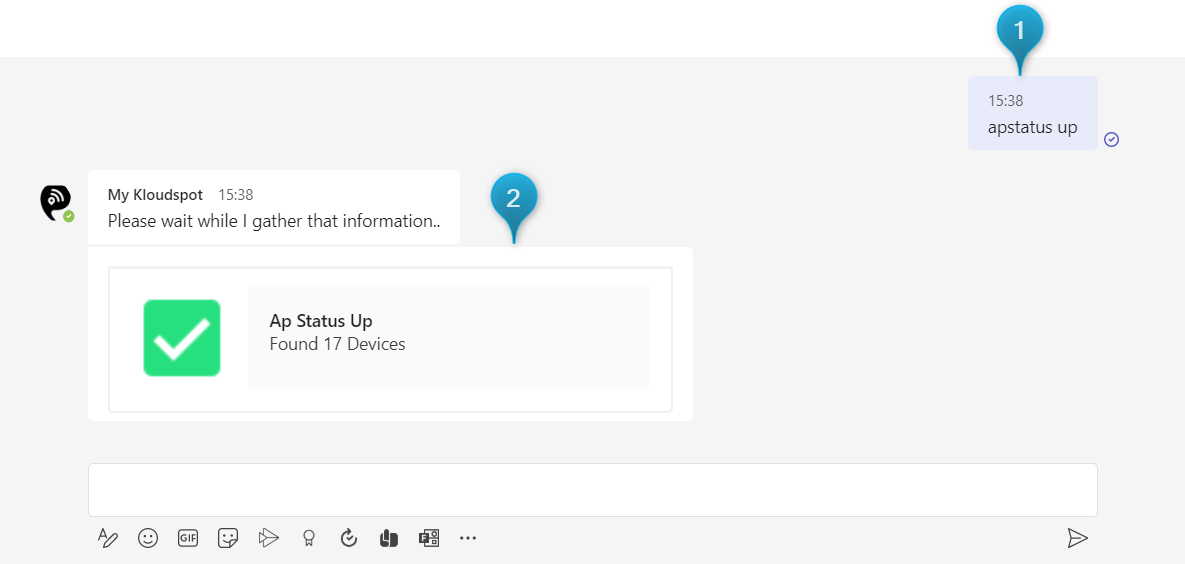

3. Click on the Ap Status Up button to get a list of APs that are
currently Up.
4. A popup window will appear with the MAC number of the currently active
access points and the last time the information was collected.
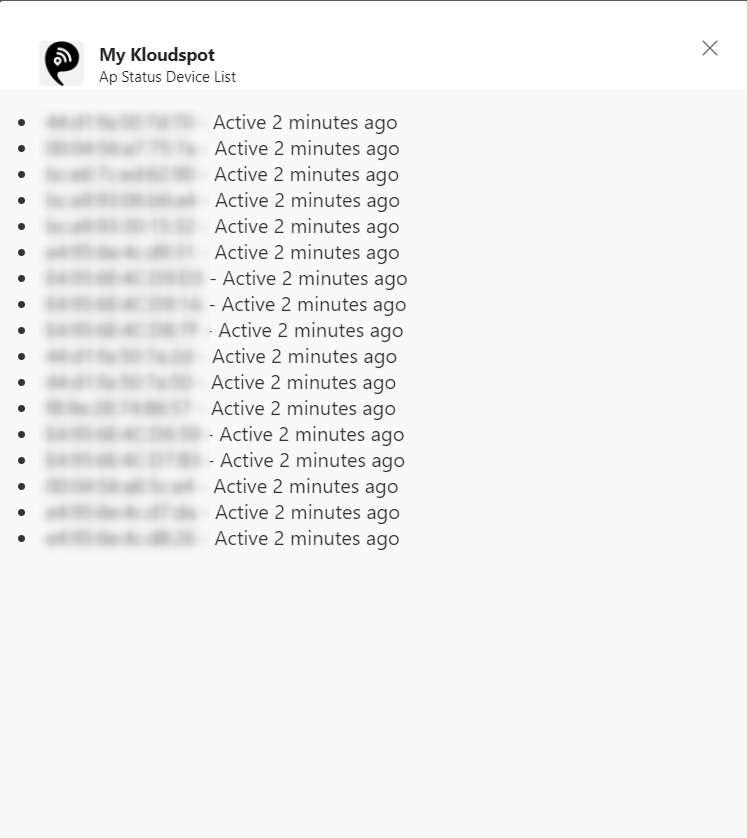

Find AP list with the Down status
1. To get information about the APs currently in down status, type the command apstatus down in the Chat box and hit enter key.
2. A list of APs in down status will be sent in reply.
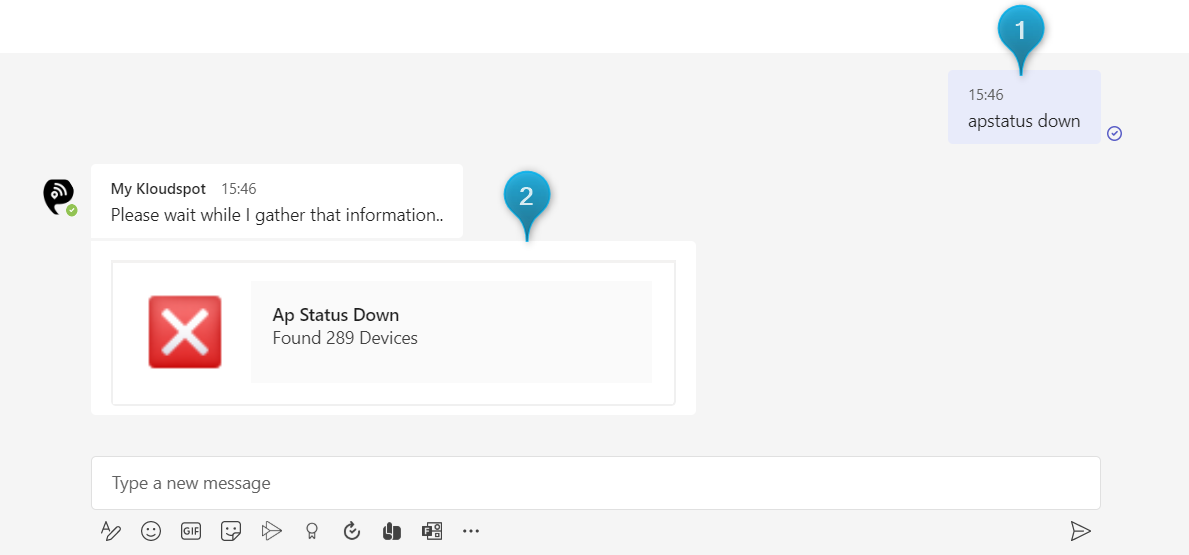

3. Click on the Ap Status down button to get a list of APs that are
currently down.
4. A popup window will appear with the MAC number of the currently inactive
access points and the last time the information was collected.
Find the status of a specific AP.
1. To know the status of a particular access point, enter the command ( apstatus )> MAC address in the chat box and hit the enter key.
For example: apstatus 00:04:56:a6:5c:25
2. status will be sent in reply.
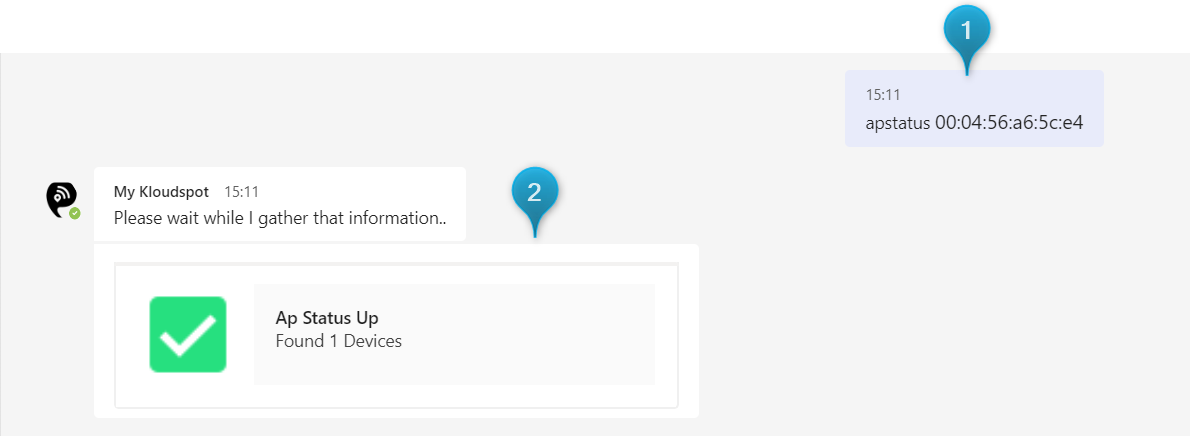

3. Click on the Ap Status Up button to get the MAC number and the last
time the information was collected.


Get location list.
1. To get a list of available locations, enter any of the following commands in the chat box and hit Enter key.
- location
- location List
- location show
- location print
2. Available locations and their number will be available as a replay for the
chat.
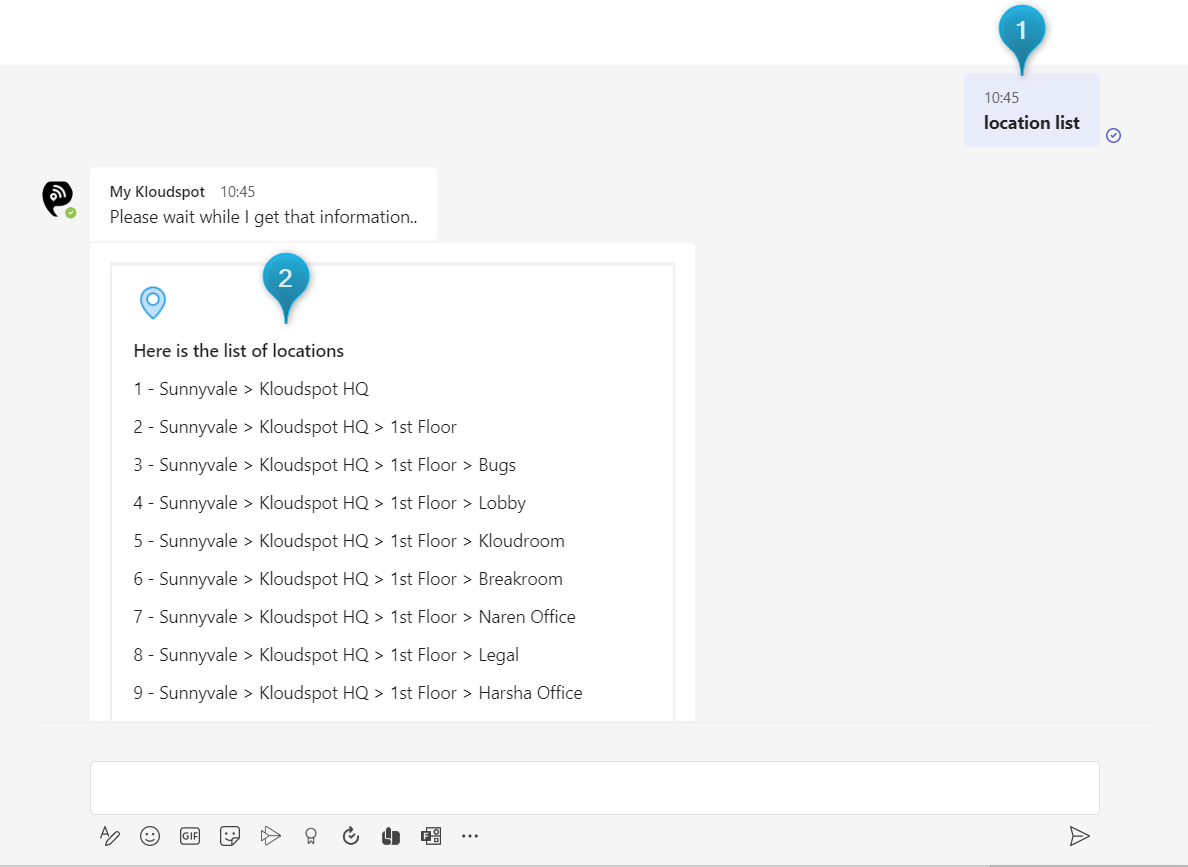

1. Type location > location number to get information about a specific location.
For example:- location 1 (In this case, to get information about Sunnyvale
location, use its serial number 1)
2. Location information will be available as a replay for the chat.
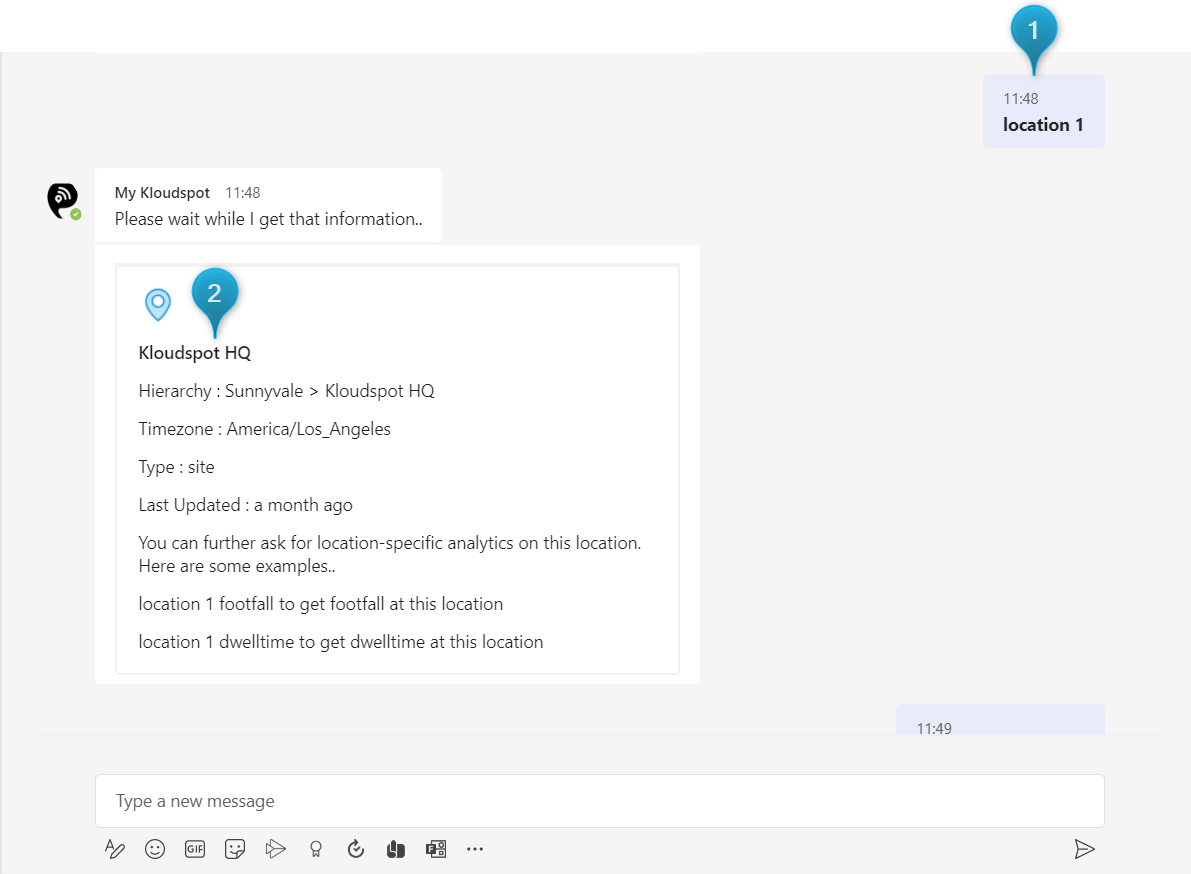

1. Type location > location number> footfall to get Footfall information about a specific location.
For example:- location 1 footfall
2. Information will be available as a replay for the chat.
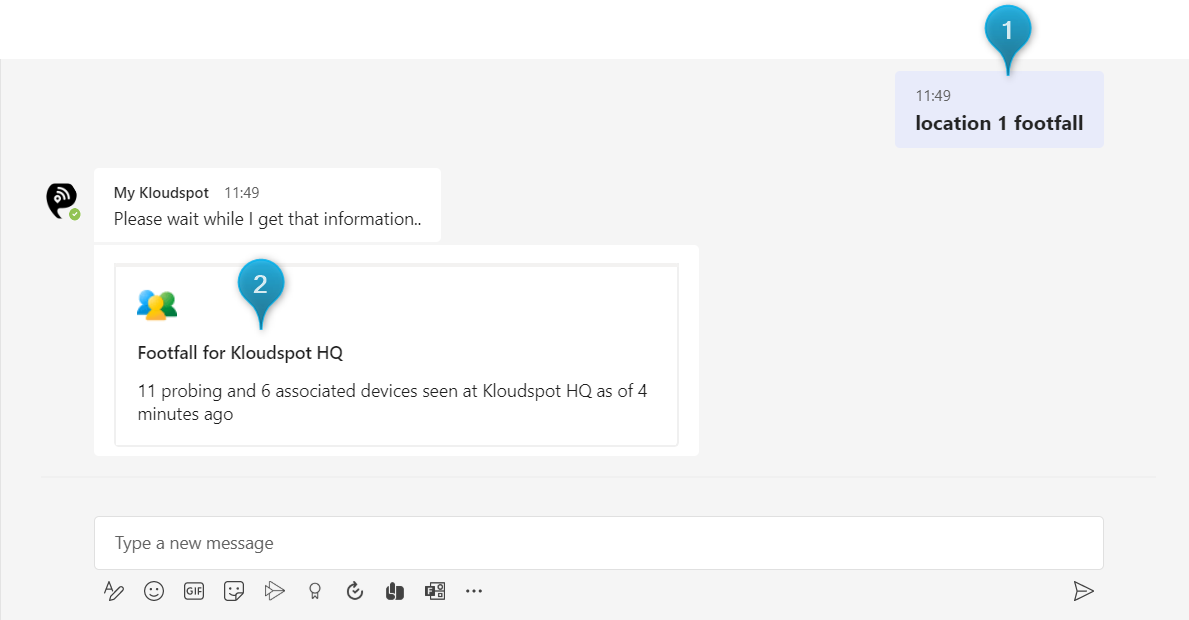

1. Type location > location number> dwelltime to get dwell time information about a specific location.
For example: - location 3 dwelltime
2. Information will be available as a replay for the chat.
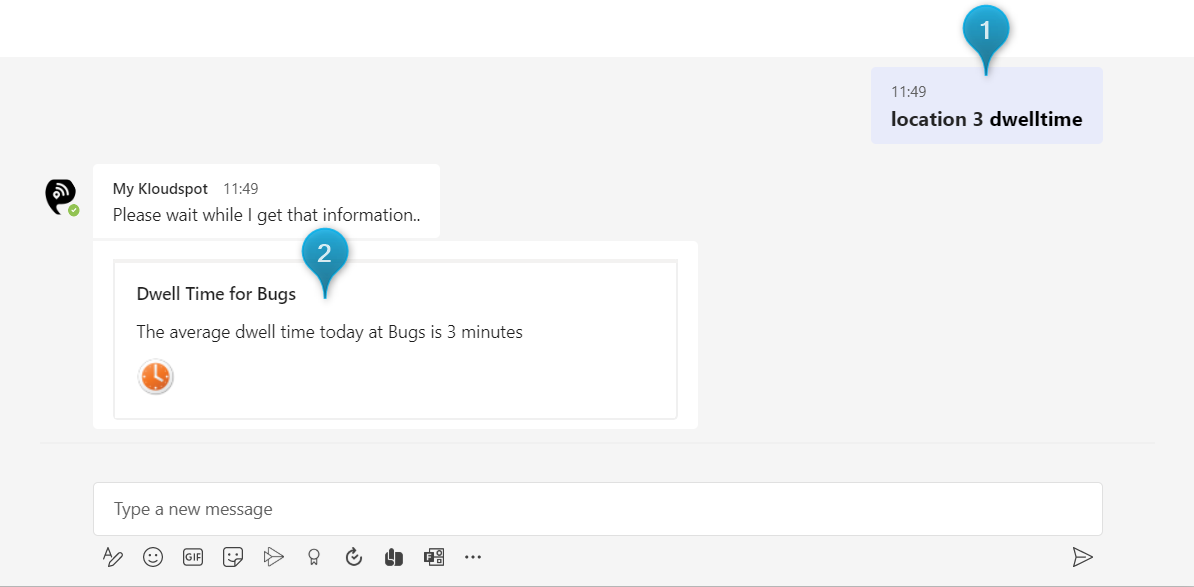

Get heatmap
1. Type location > location number> heatmap to get heatmap for a specific location.
For example: - location 1 heatmap
2. Information will be available as a replay for the chat.
3. Click the More Detail button for more information.
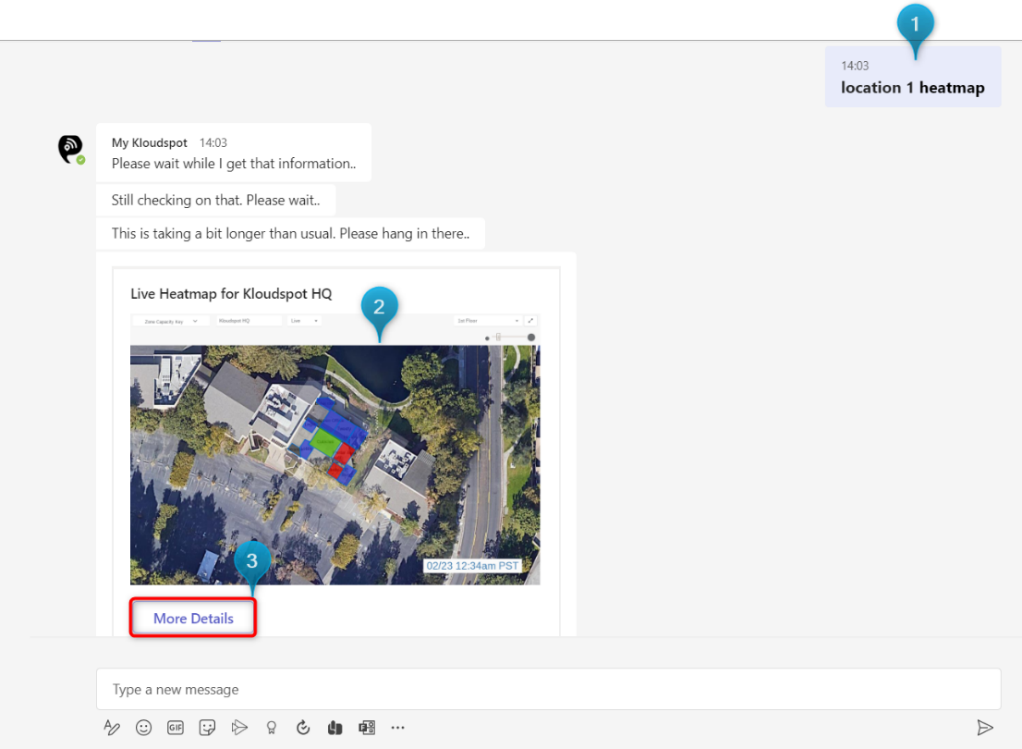

4. To display information to the nearest display terminal, click on the
Publish on Display Terminal button in the popup window that opens.
5. Then select the display.
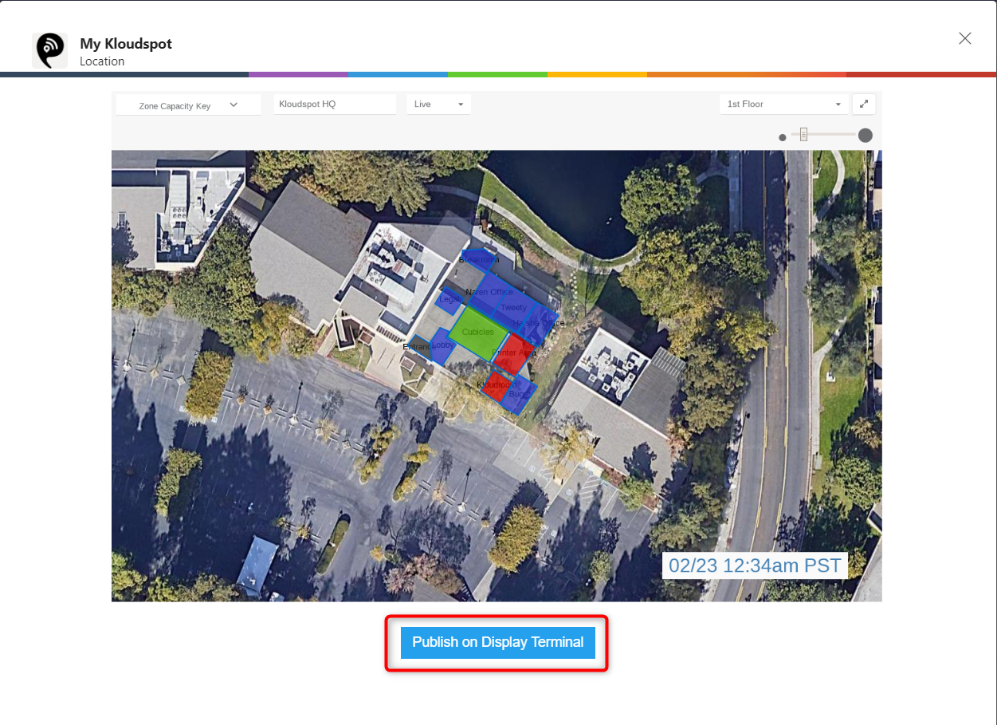

Get user chart
1. Type location > location number> userchart to get a user chart for a specific location.
For example: - location 1 userchart
2. Information will be available as a replay for the chat.
3. Click the More Detail button for more information.
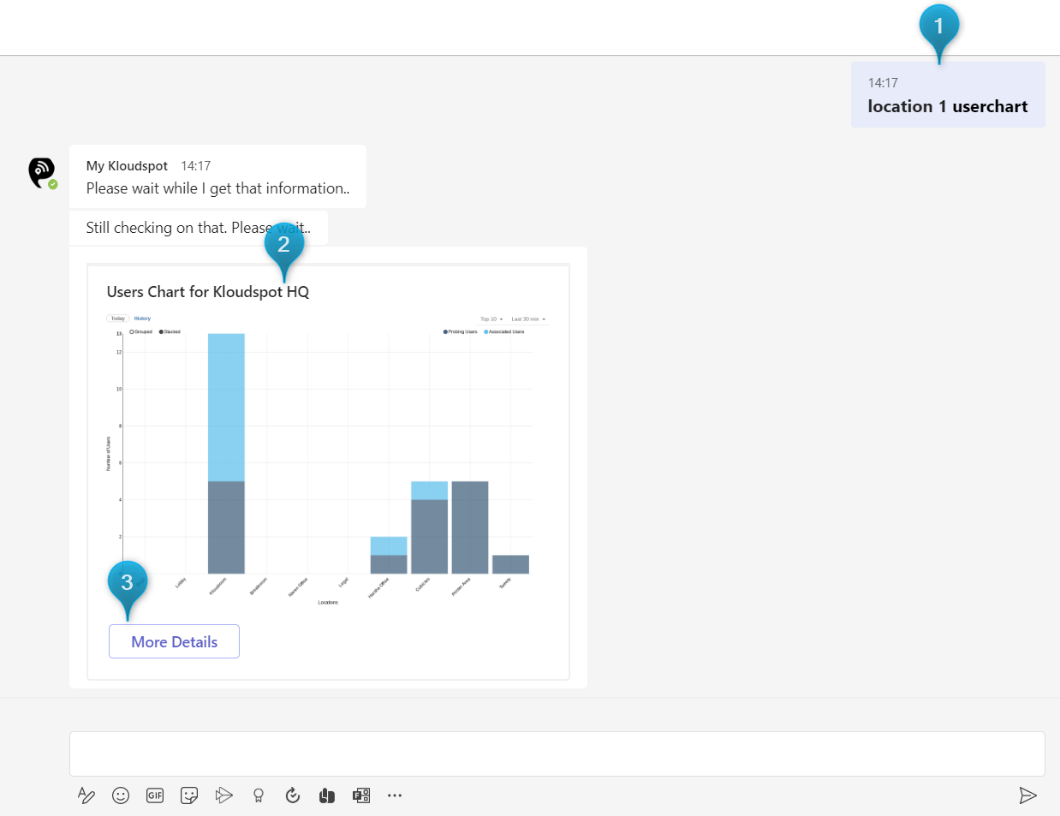

4. To display information to the nearest display terminal, click on the
Publish on Display Terminal button in the popup window that opens.
5. Then select the display.
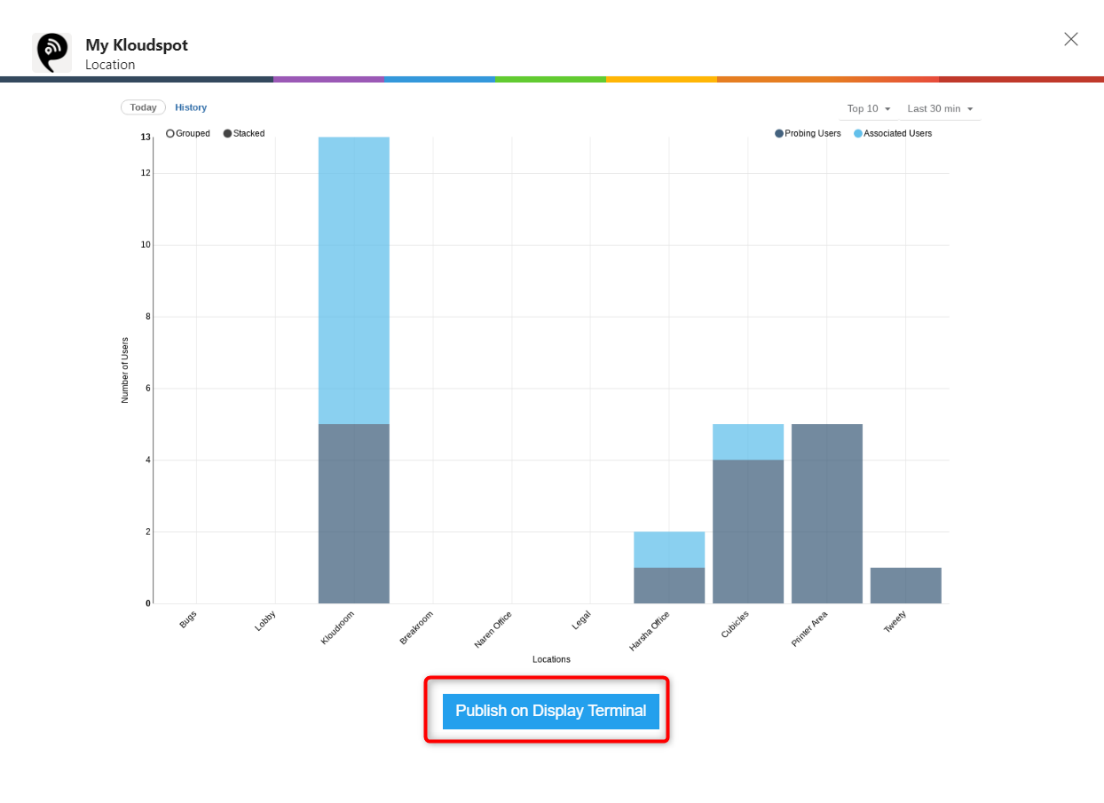

1. Type location > location number> footfallcalendar to get footfall calendar for a specific location.
For example: - location 1 footfallcalendar
2. Information will be available as a replay for the chat.
3. Click the More Detail button for more information.
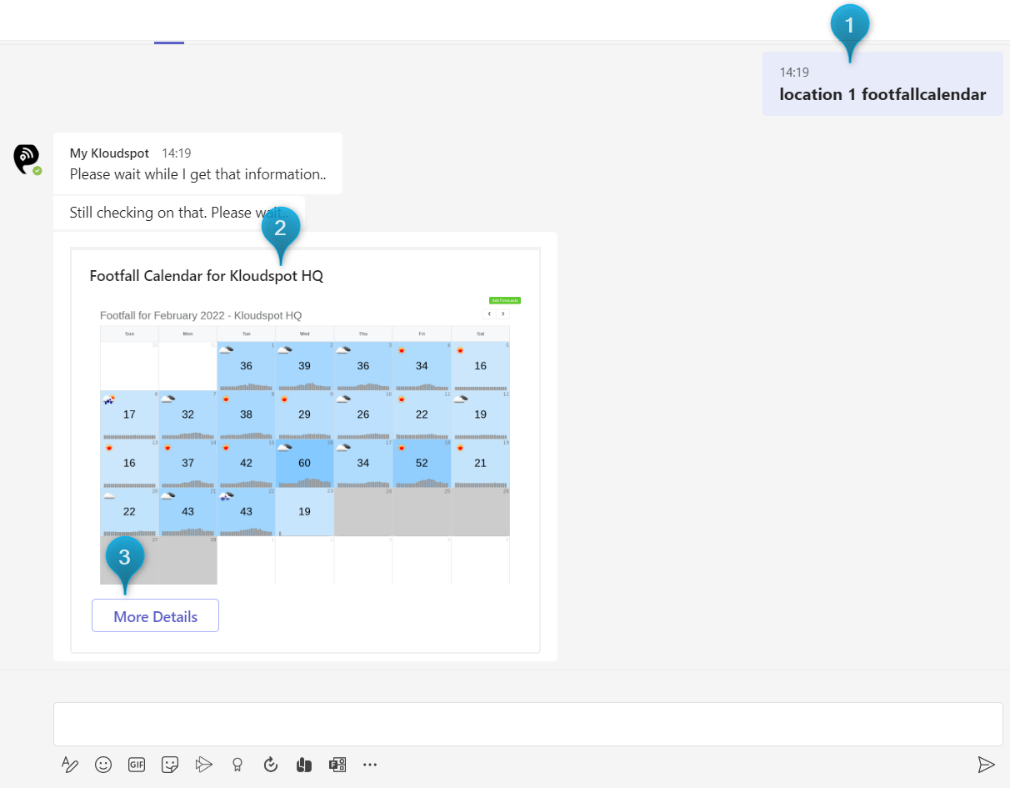

4. To display information to the nearest display terminal, click on the
Publish on Display Terminal button in the popup window that opens.
5. Then select the display.
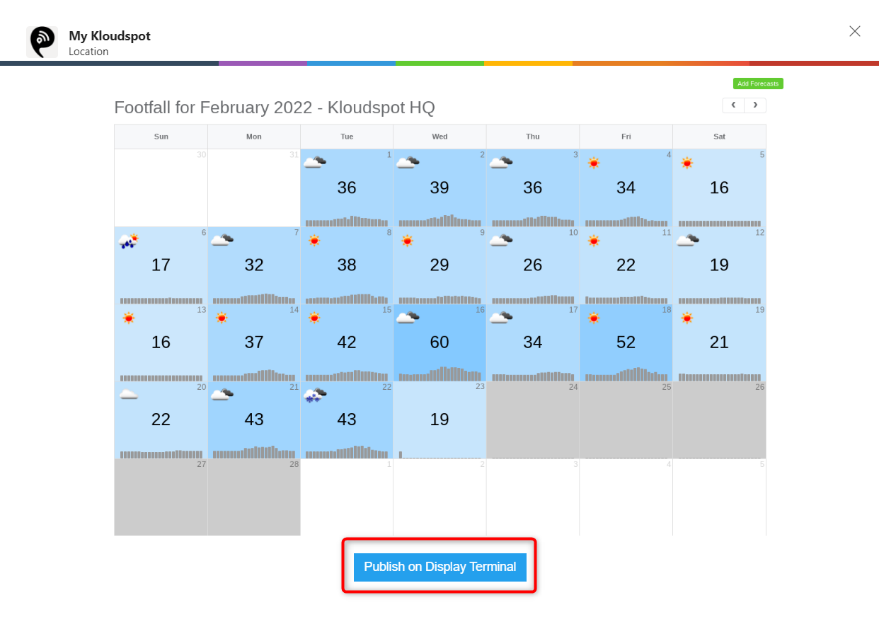

Get path distribution
1. Type location > location number> pathdistribution to get path distribution for a specific location.
For example: - location 1 pathdistribution
2. Information will be available as a replay for the chat.
3. Click the More Detail button for more information.
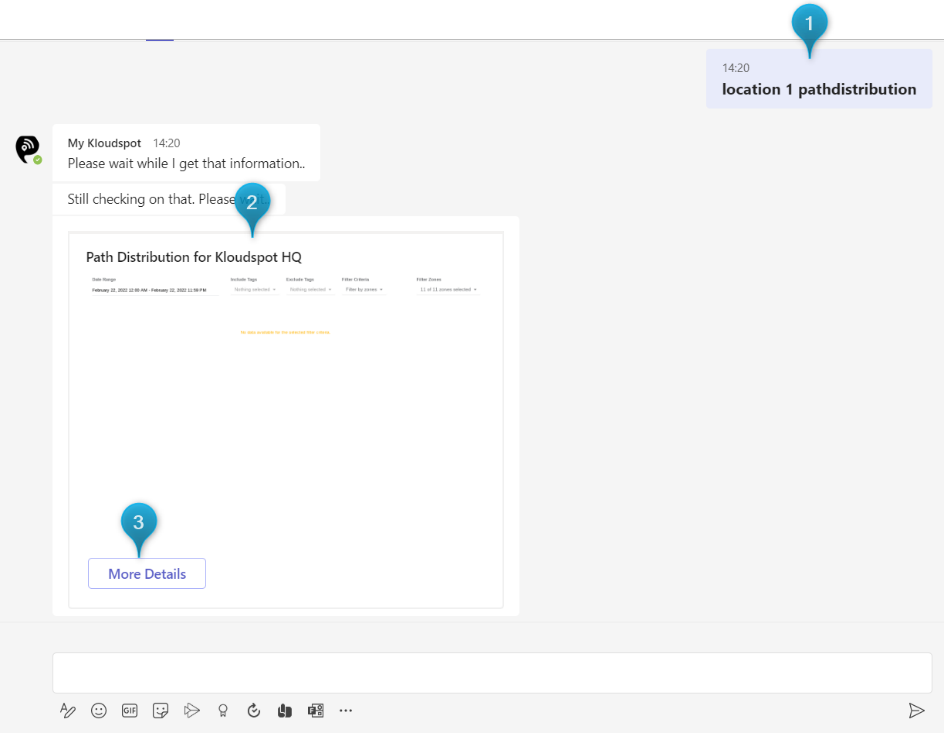

4. To display information to the nearest display terminal, click on the
Publish on Display Terminal button in the popup window that opens.
5. Then select the display


Get outbound traffic
1. Type location > location number> outboundtraffic to get outbound traffic for a specific location.
For example: - location 1 outboundtraffic
2. Information will be available as a replay for the chat.
3. Click the More Detail button for more information.
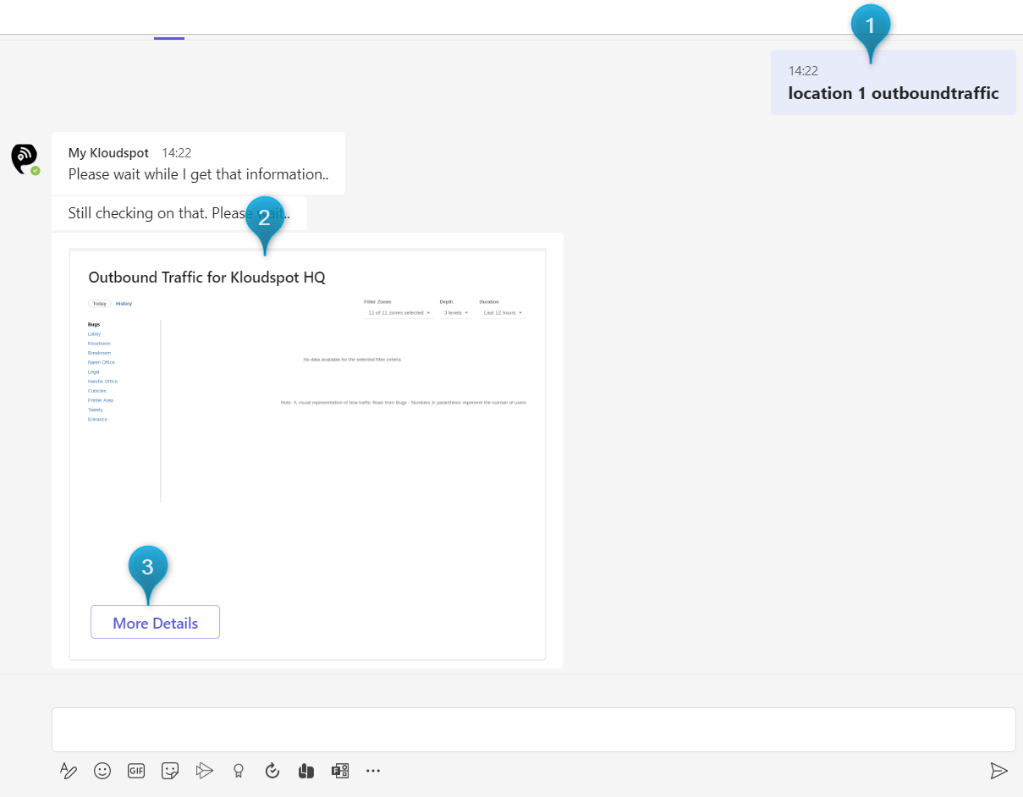

4. To display information to the nearest display terminal, click on the
Publish on Display Terminal button in the popup window that opens.
5. Then select the display.
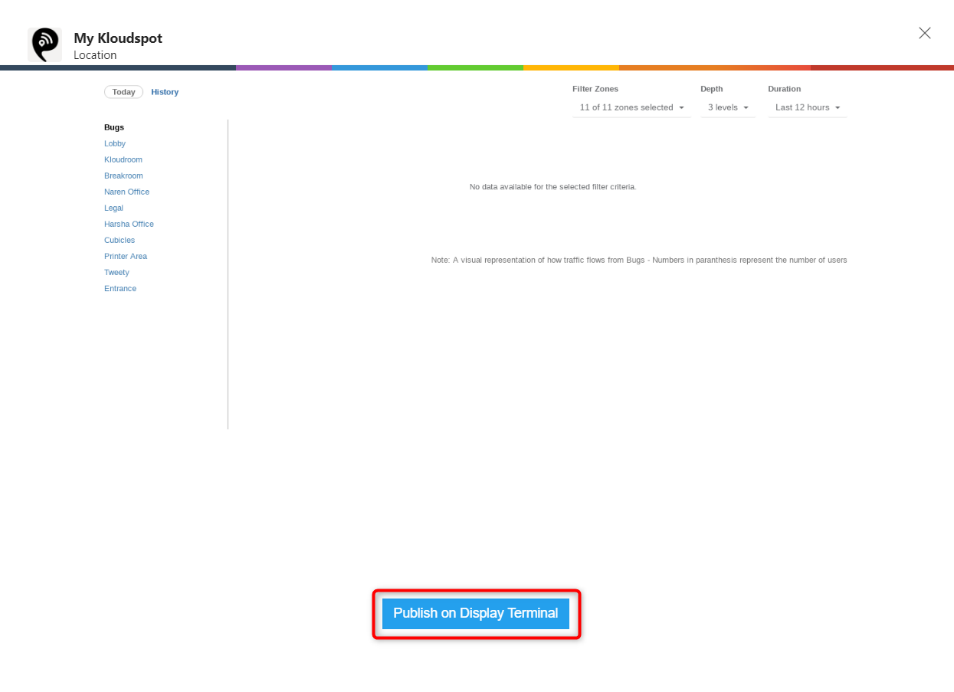

Get inbound traffic
1. Type location > location number> inboundtraffic to get inbound traffic for a specific location.
For example: - location 1 inboundtraffic
2. Information will be available as a replay for the chat.
3. Click the More Detail button for more information.
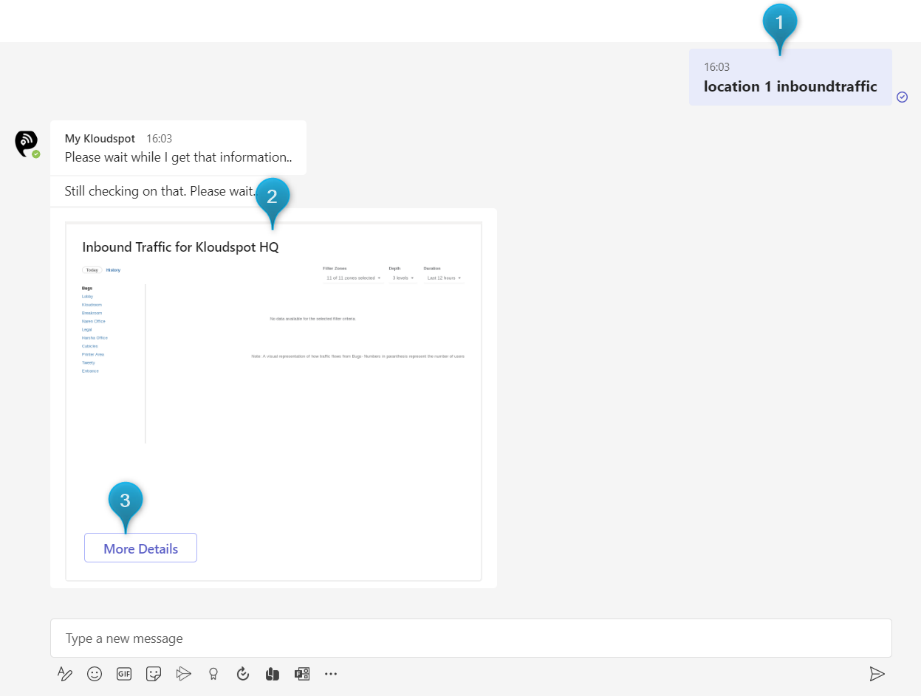

4. To display information to the nearest display terminal, click on the
Publish on Display Terminal button in the popup window that opens.
5. Then select the display.
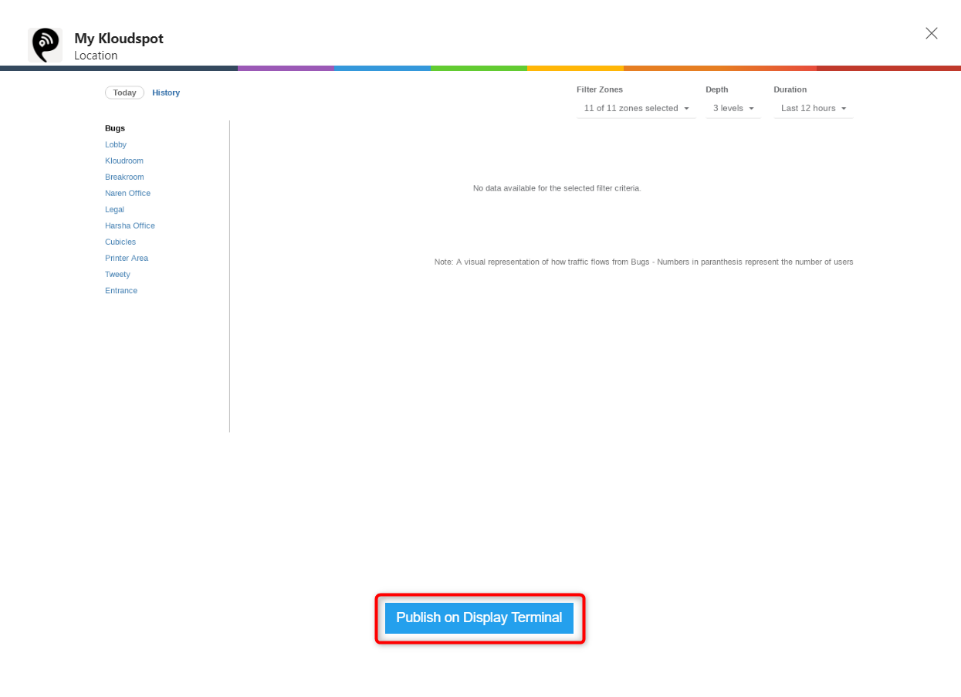

Get dwell time chart
1. Type location > location number> dwelltimechart to get dwell time chart for a specific location.
For example: - location 1 dwelltimechart
2. Information will be available as a replay for the chat.
3. Click the More Detail button for more information.
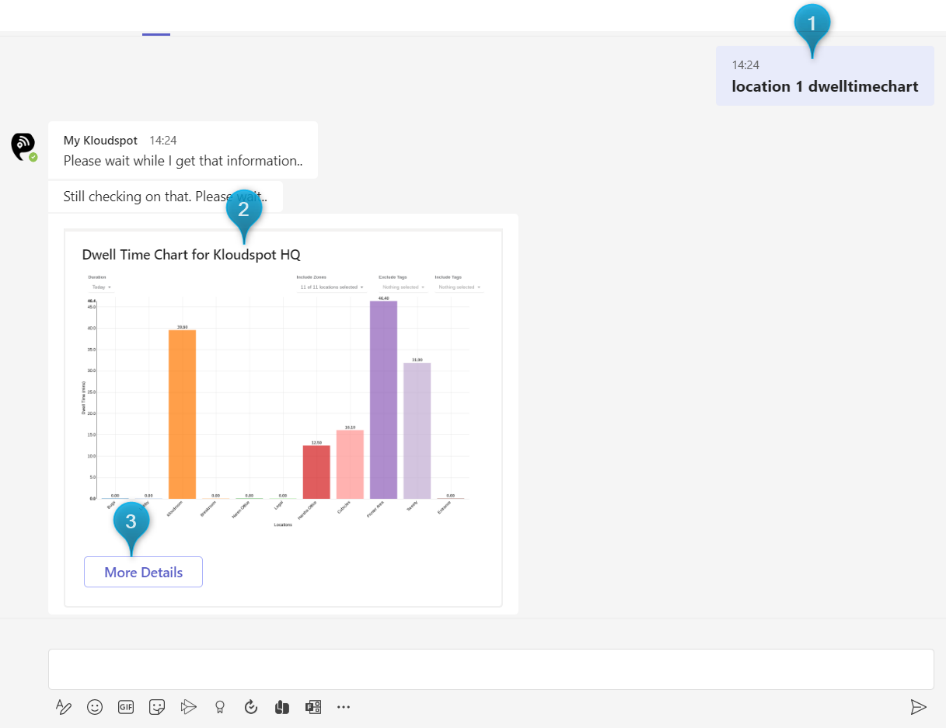

4. To display information to the nearest display terminal, click on the
Publish on Display Terminal button in the popup window that opens.
5. Then select the display.
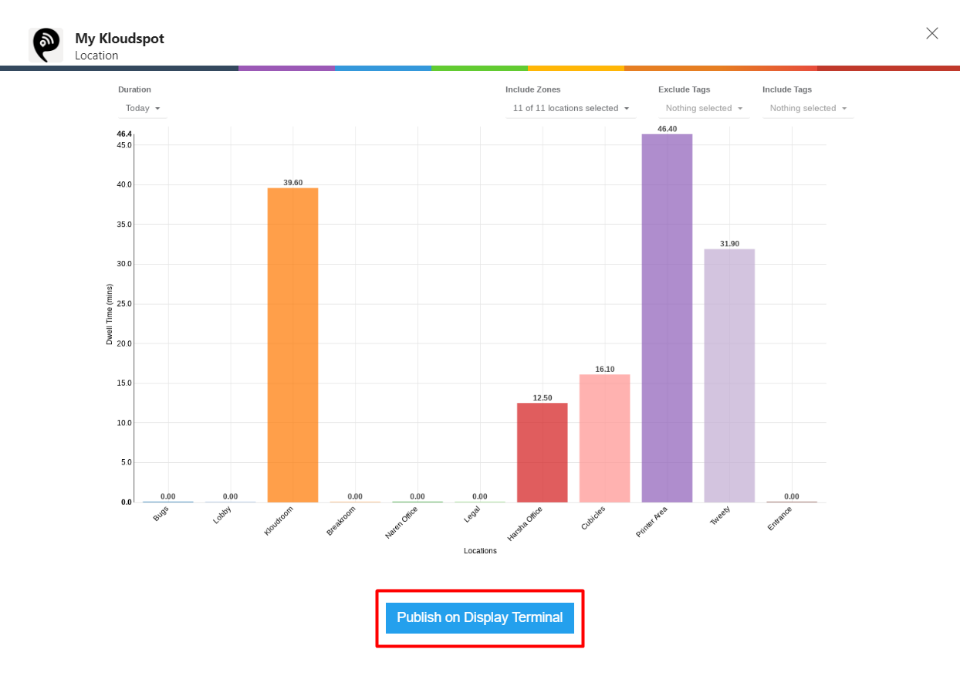

Get repeat user chart
1. Type location > location number> repeatuserchart to get repeat user chart for a specific location.
For example: - location 1 repeatuserchart
2. Information will be available as a replay for the chat.
3. Click the More Detail button for more information.
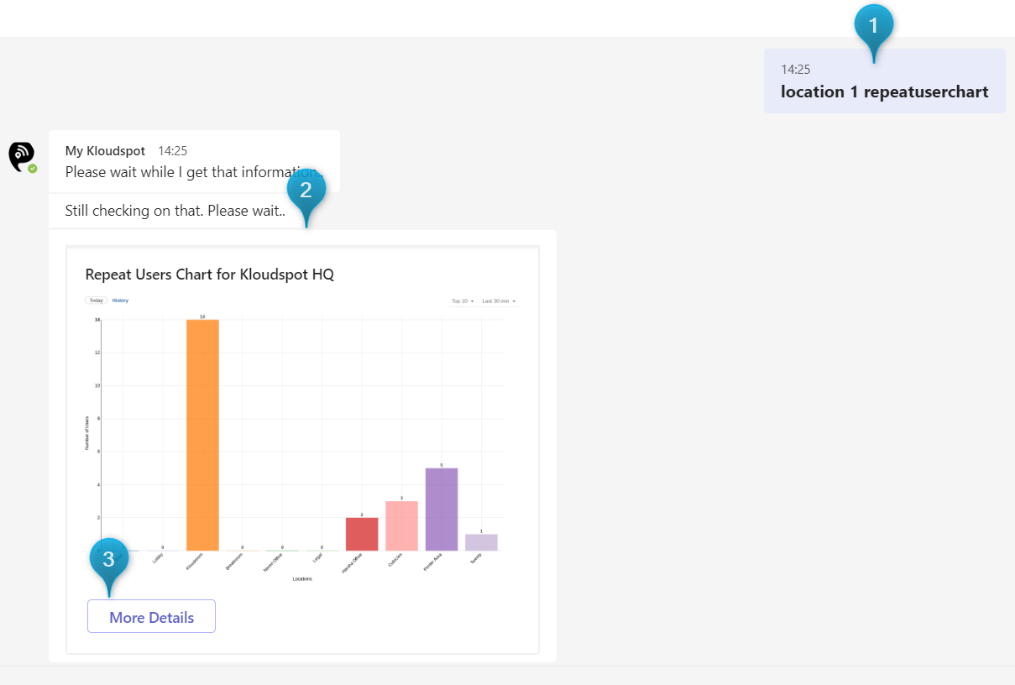

4. To display information to the nearest display terminal, click on the
Publish on Display Terminal button in the popup window that opens.
5. Then select the display.
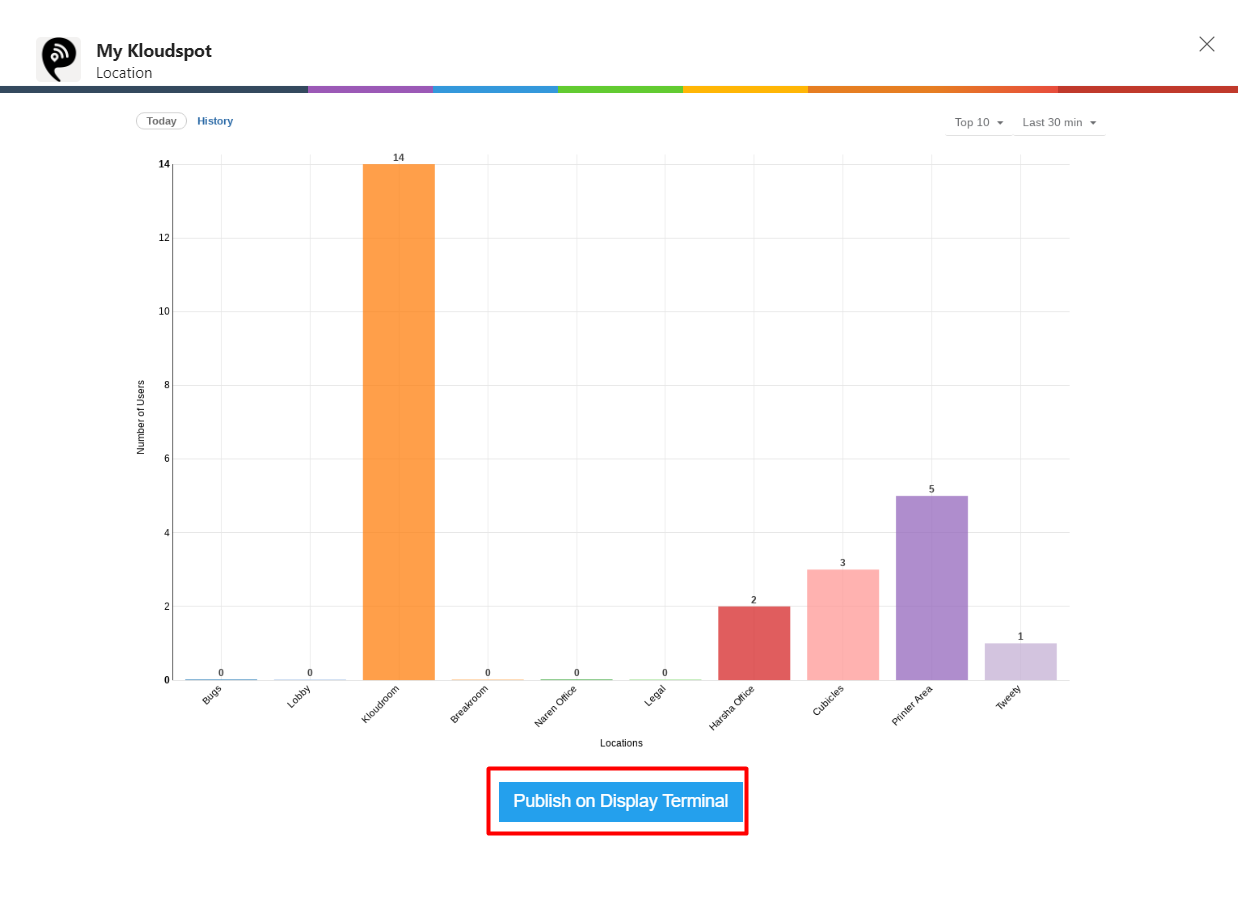

Get camera demographics chart
1. Type location > location number> camerademographicschart to get camera demographics chart for a specific location.
For example: - location 1 camerademographicschart
2. Information will be available as a replay for the chat.
3. Click the More Detail button for more information.
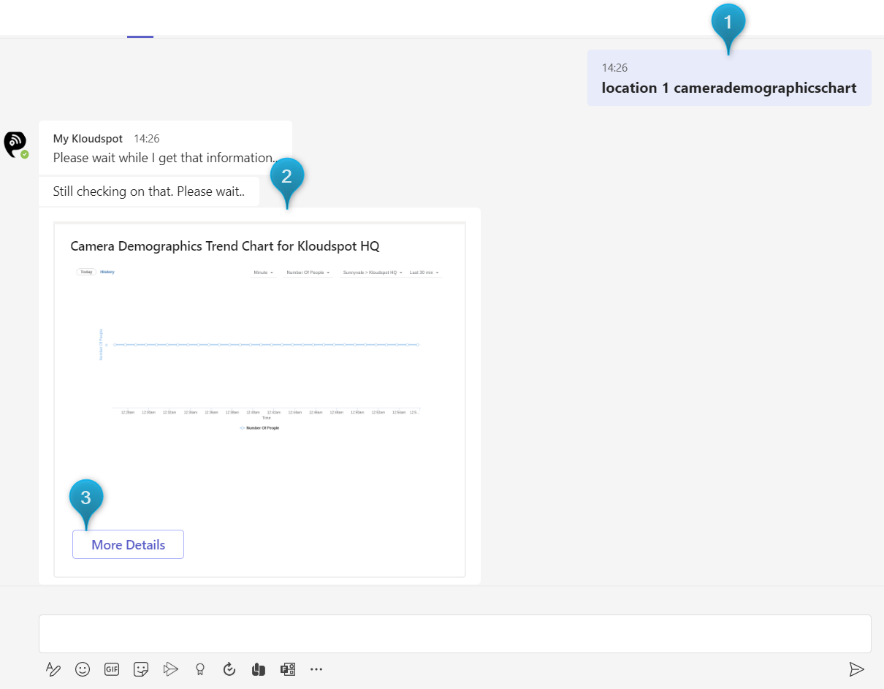

4. To display information to the nearest display terminal, click on the
Publish on Display Terminal button in the popup window that opens.
5. Then select the display.
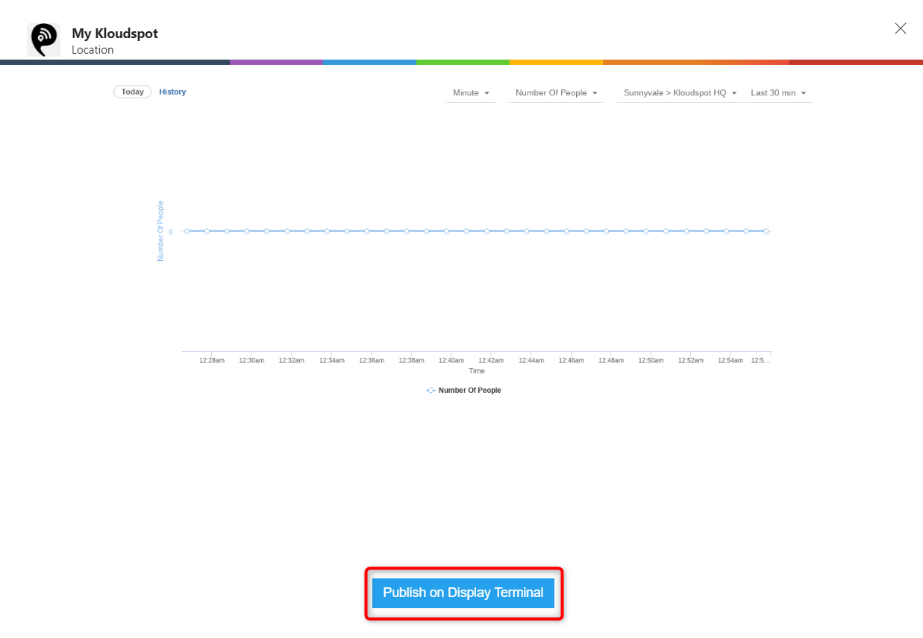

Get camera occupancy chart
1. Type location > location number> cameraoccupancychart to get camera occupancy chart for a specific location.
For example: - location 1 cameraoccupancychart
2. Information will be available as a replay for the chat.
3. Click the More Detail button for more information.
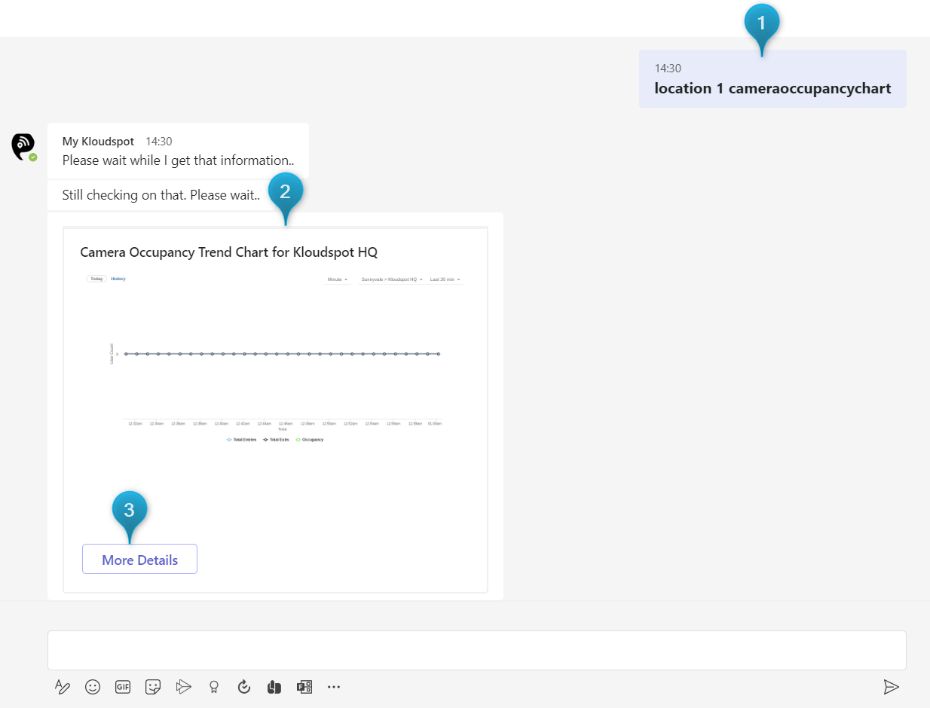

4. To display information to the nearest display terminal, click on the
Publish on Display Terminal button in the popup window that opens.
5. Then select the display.
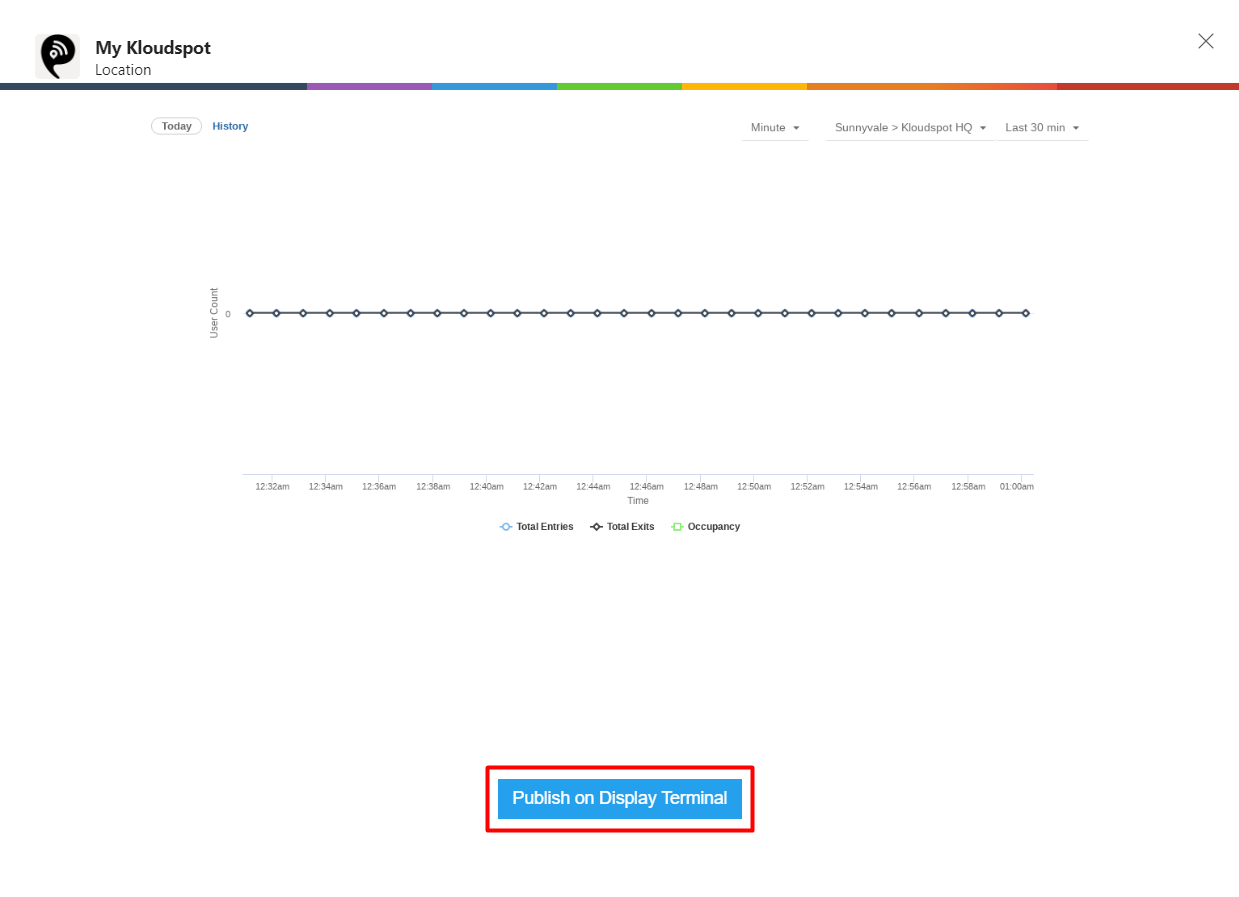

Get live feed
1. Type location > location number> livefeed to get live feed for a specific location.
For example: - location 1 livefeed
2. Information will be available as a replay for the chat.
3. Click the More Detail button for more information.
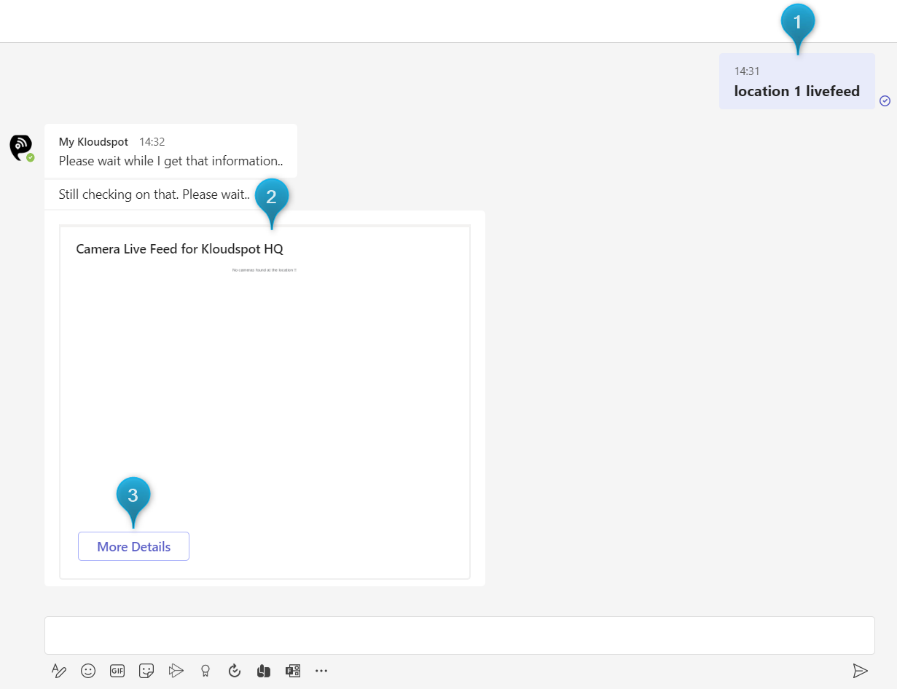

4. To display information to the nearest display terminal, click on the
Publish on Display Terminal button in the popup window that opens.
5. Then select the display.
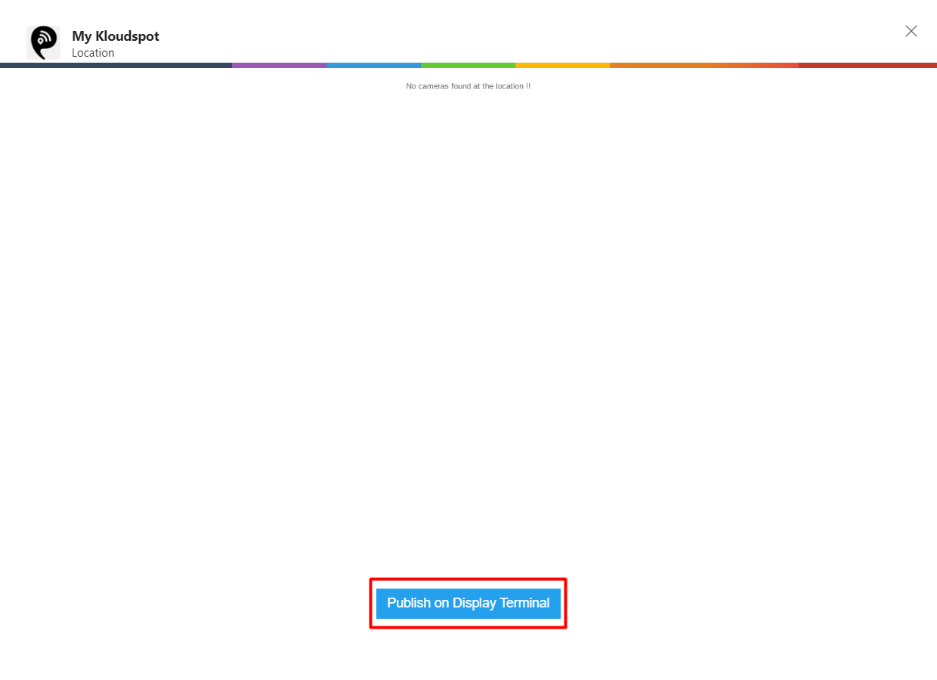

1. If you want to search for a user’s information, type the user’s name in the chat box and hit enter key.
2. The user card with the user’s information will be available as a replay for the chat immediately.
3. You can also contact that person by clicking on the call or chat button.
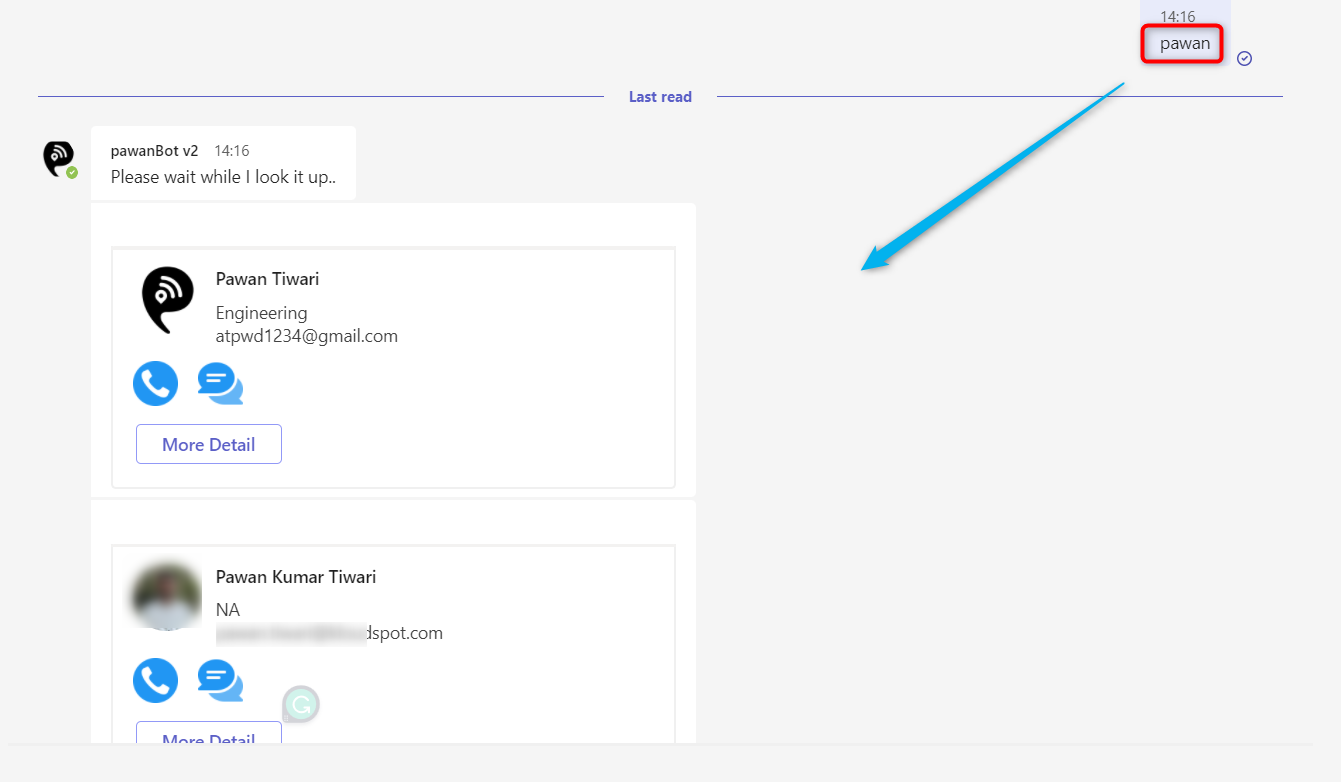

4. Click on the More Details button to know the user’s mail Id and
location.
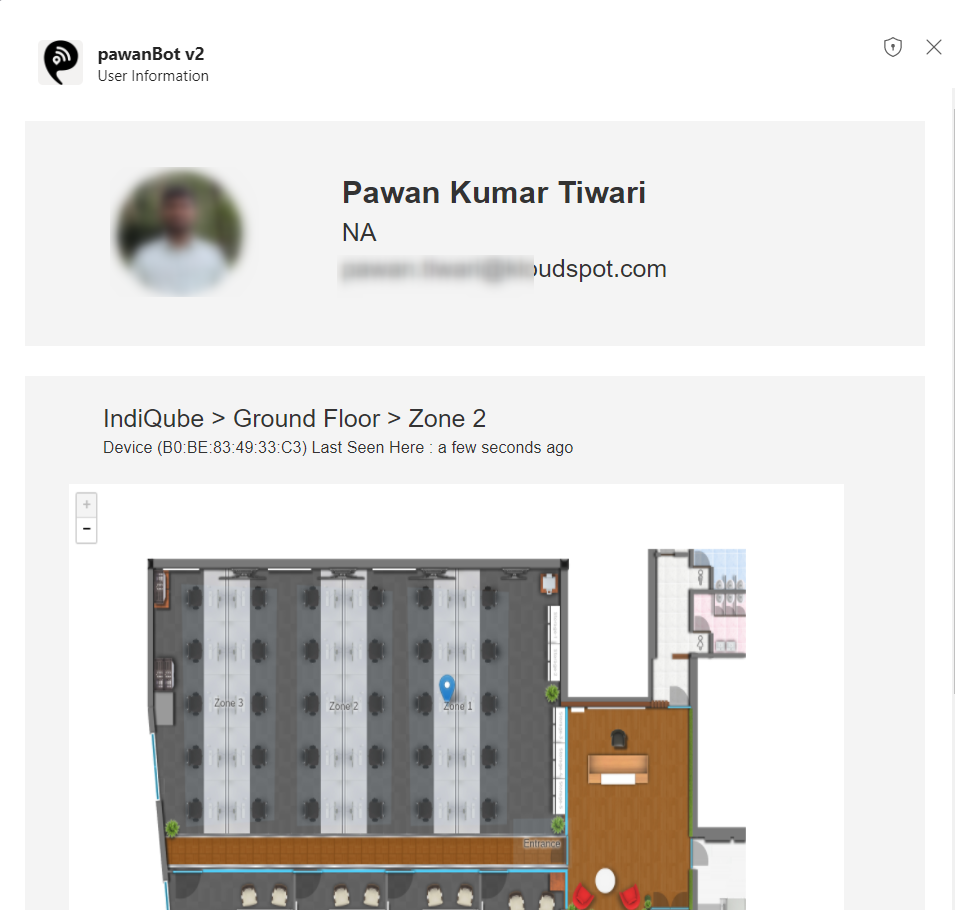

Get Upcoming Meetings details
1. To get the details about upcoming meetings, enter the command upcoming meetings the chat box and hit the enter key.
2. Upcoming meeting details will be sent as the replay for the chat.
3. Click the Join Meeting button to join the meeting.
